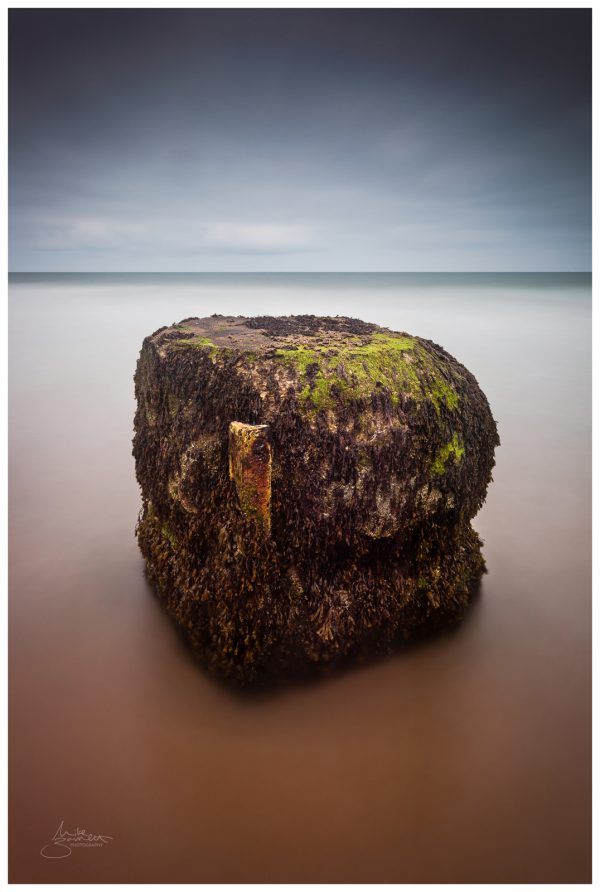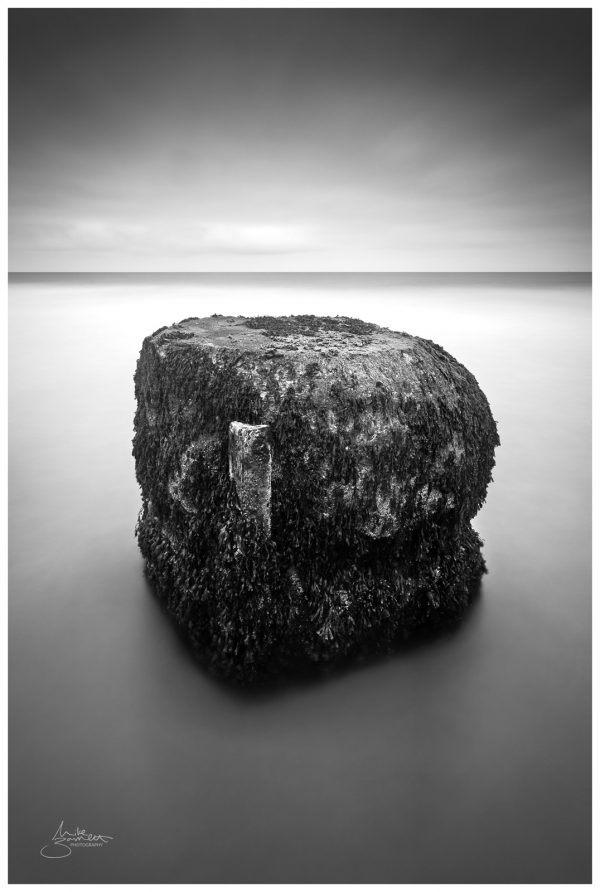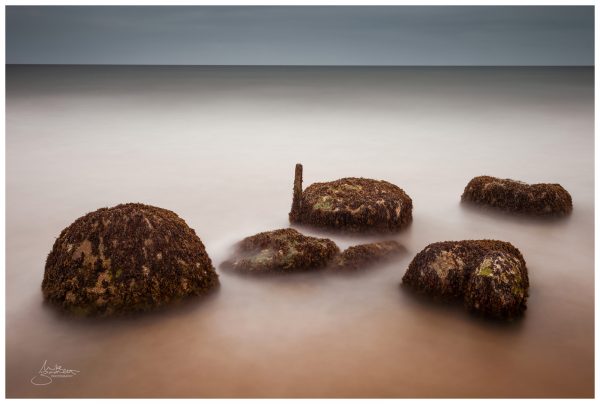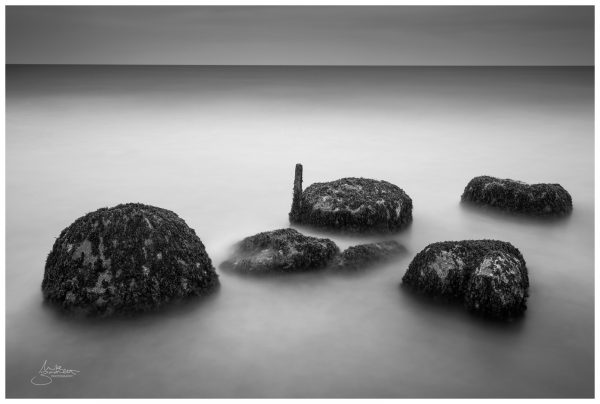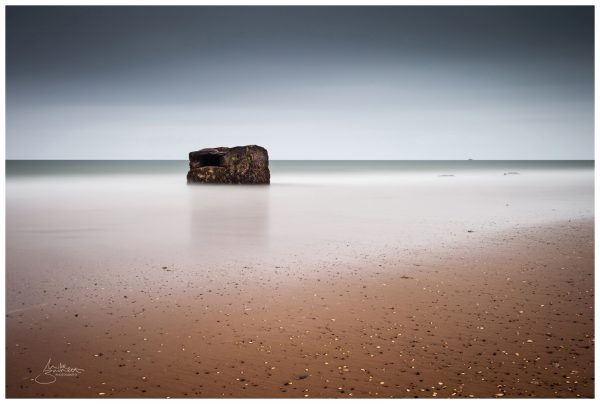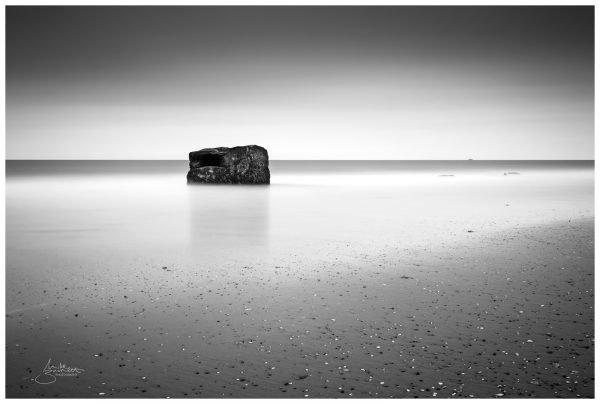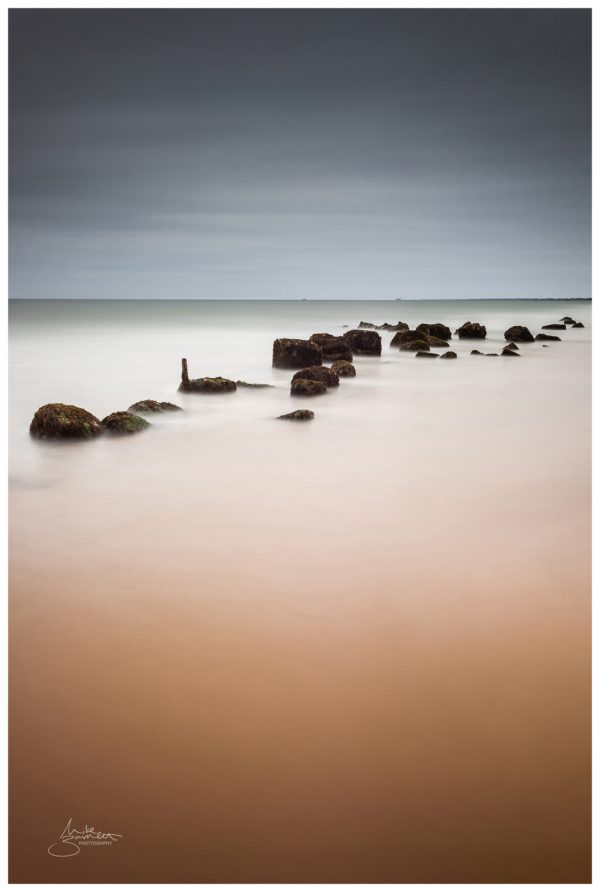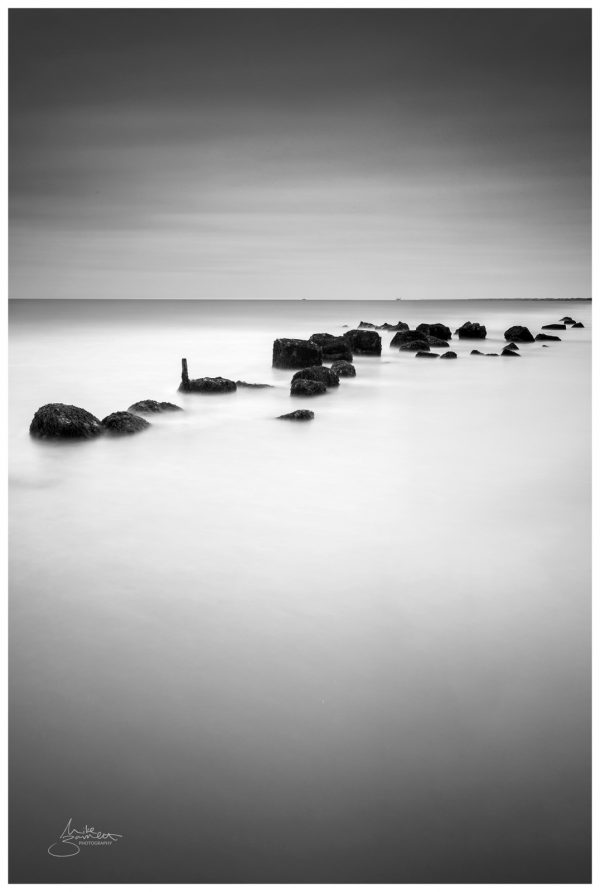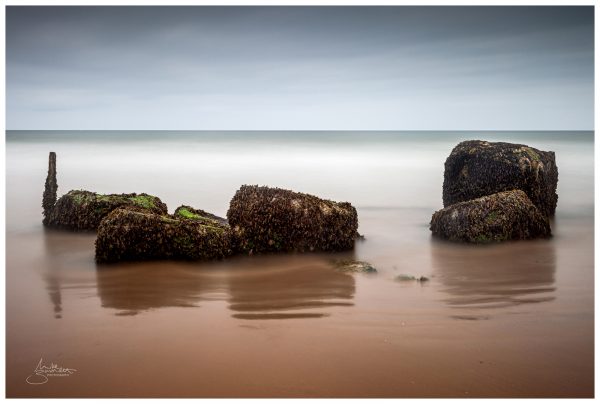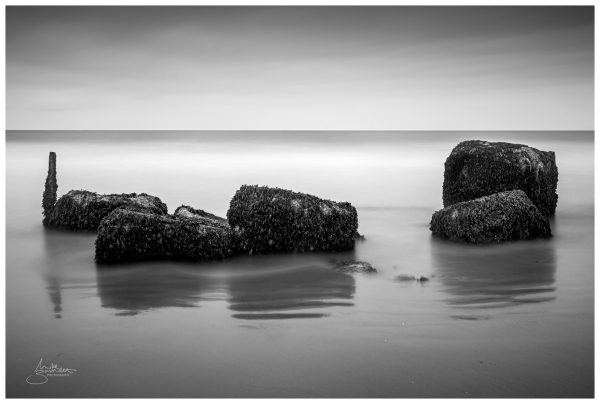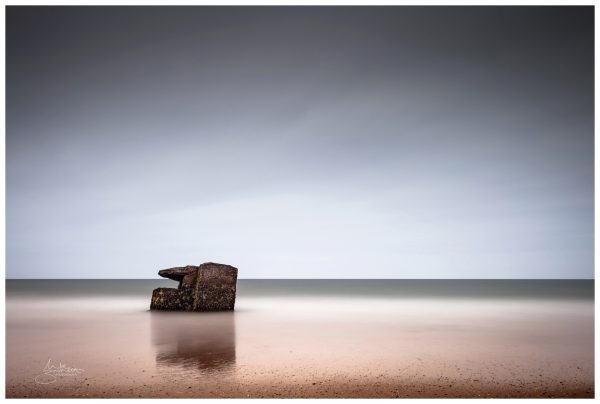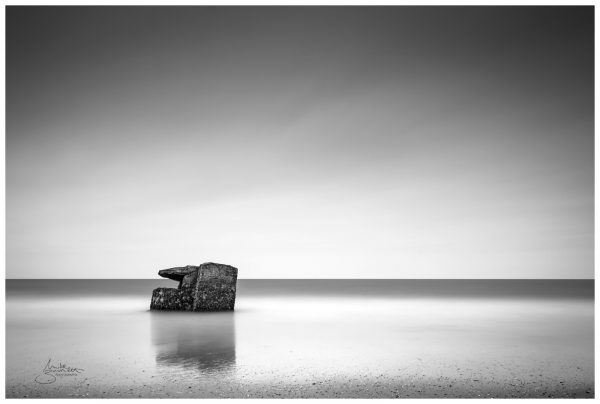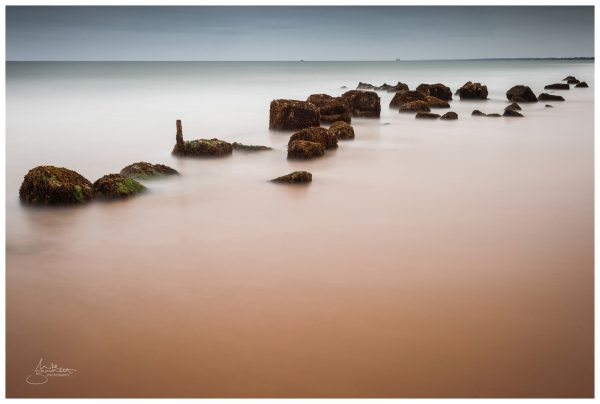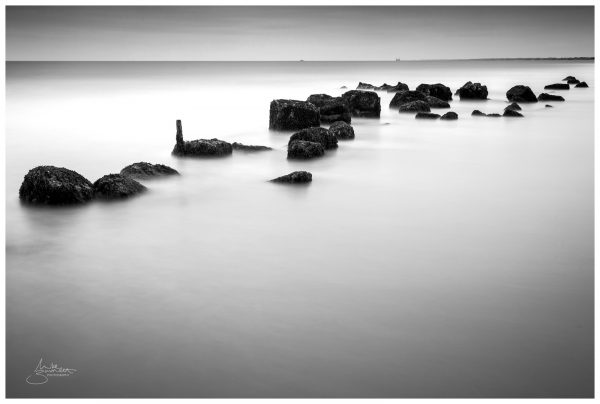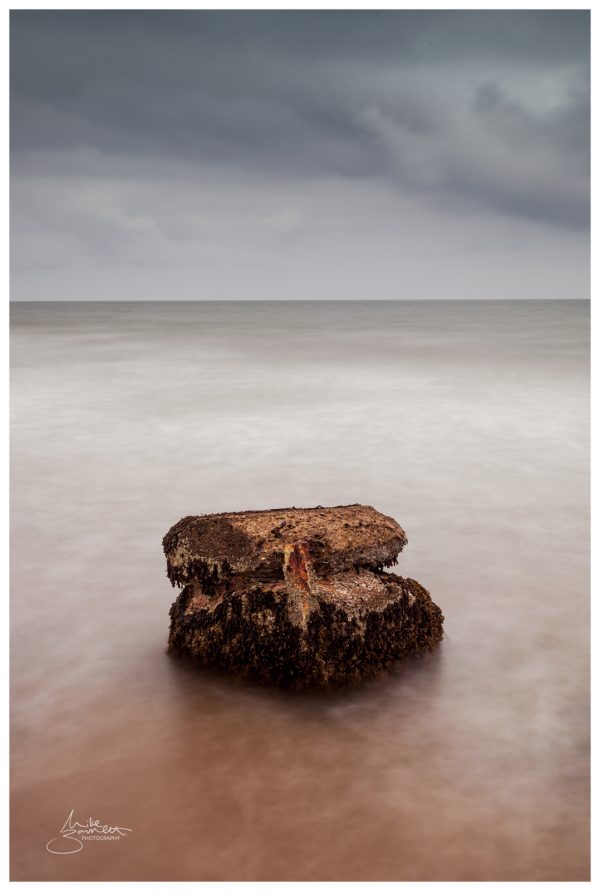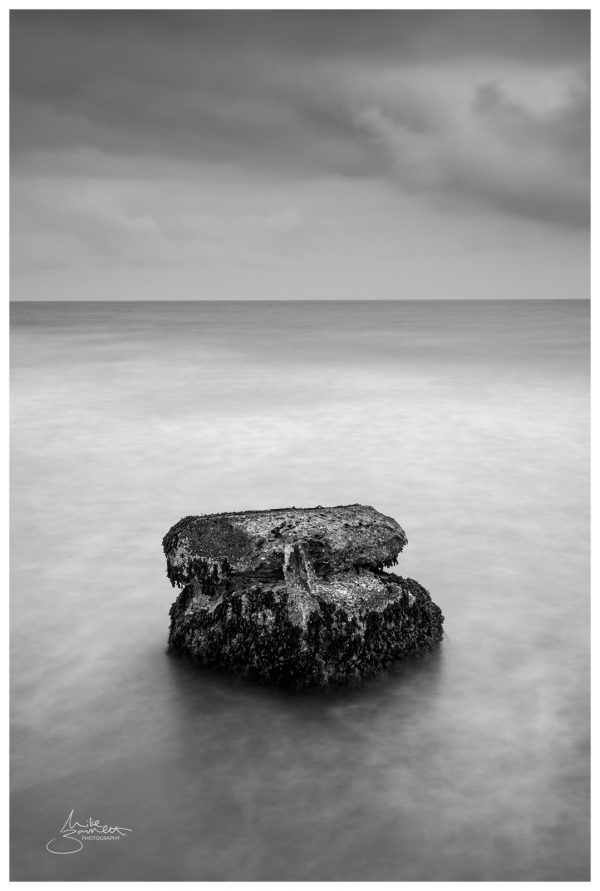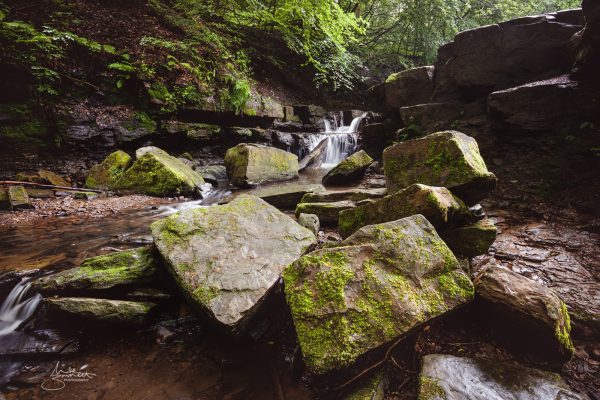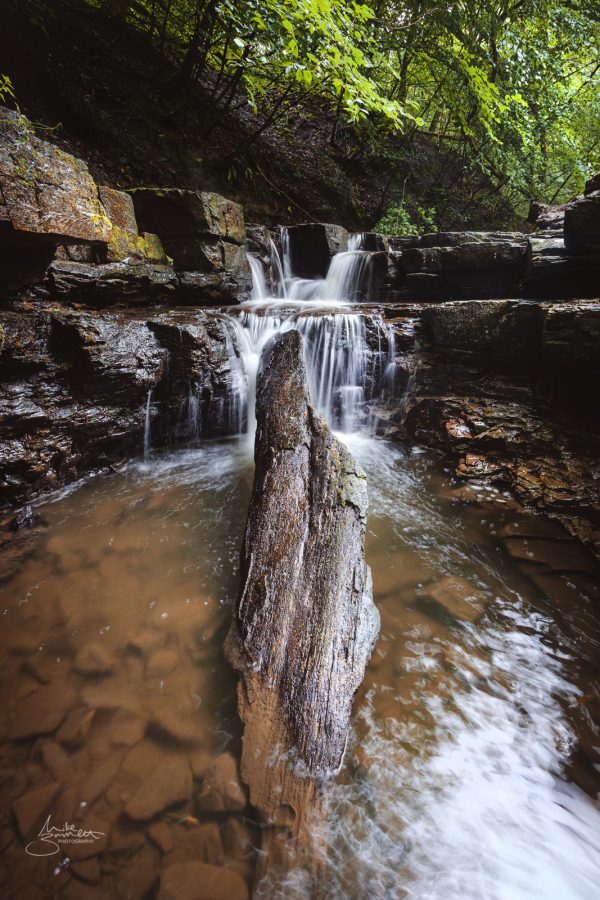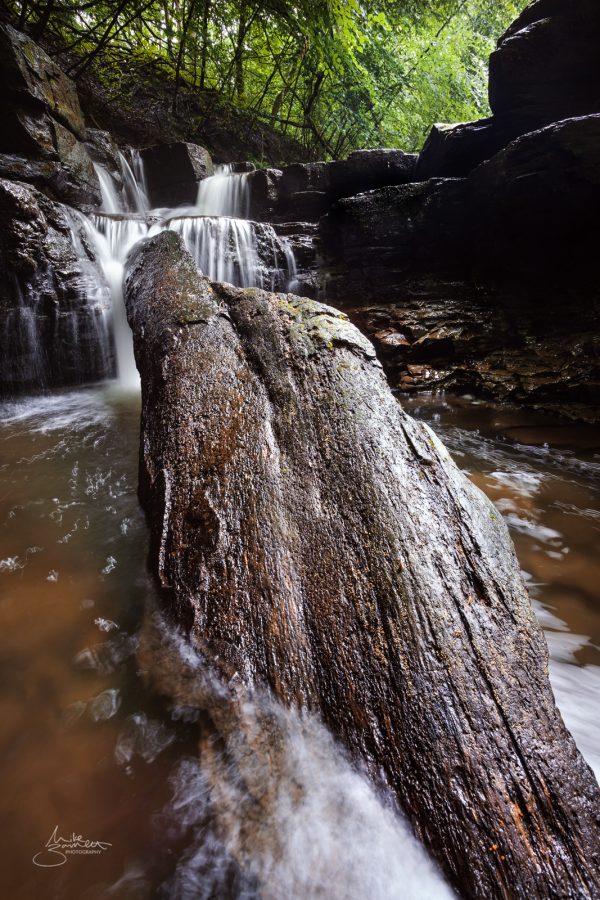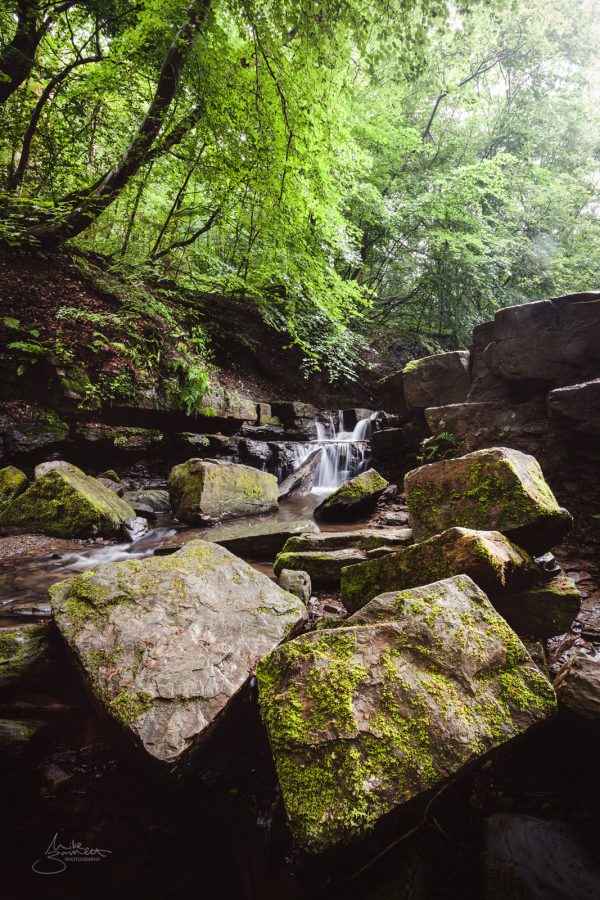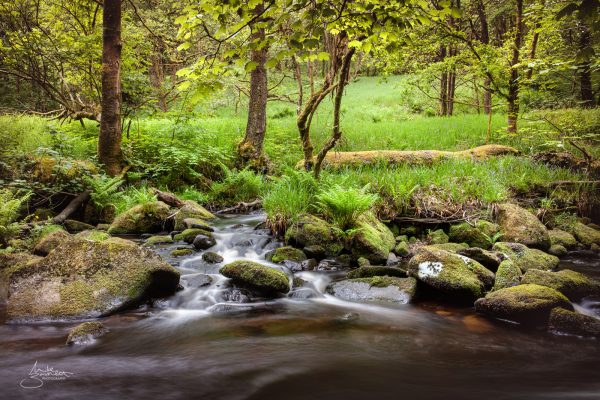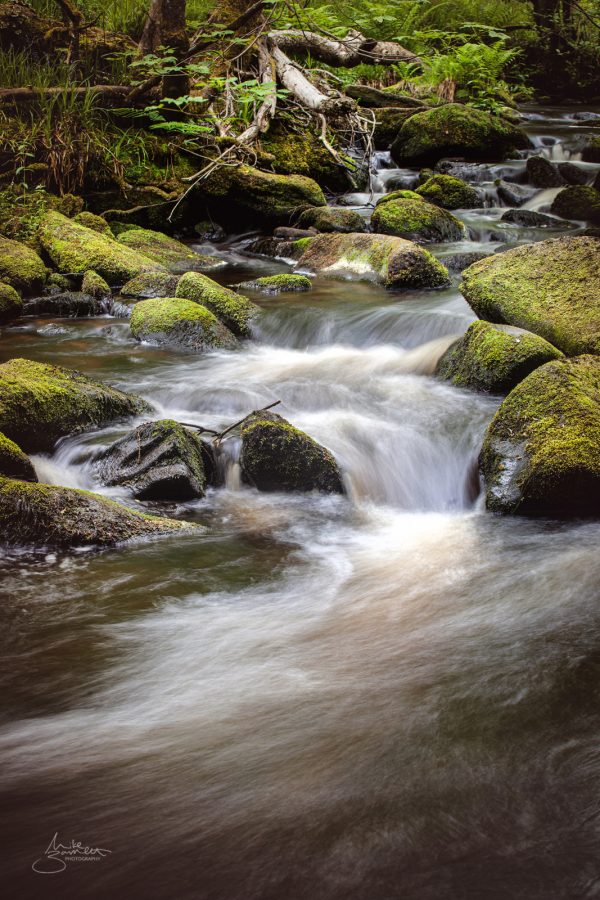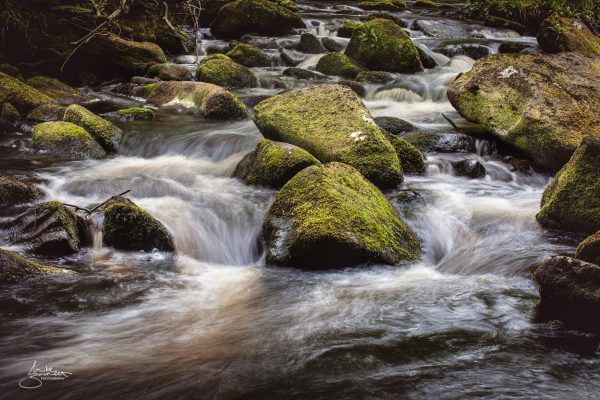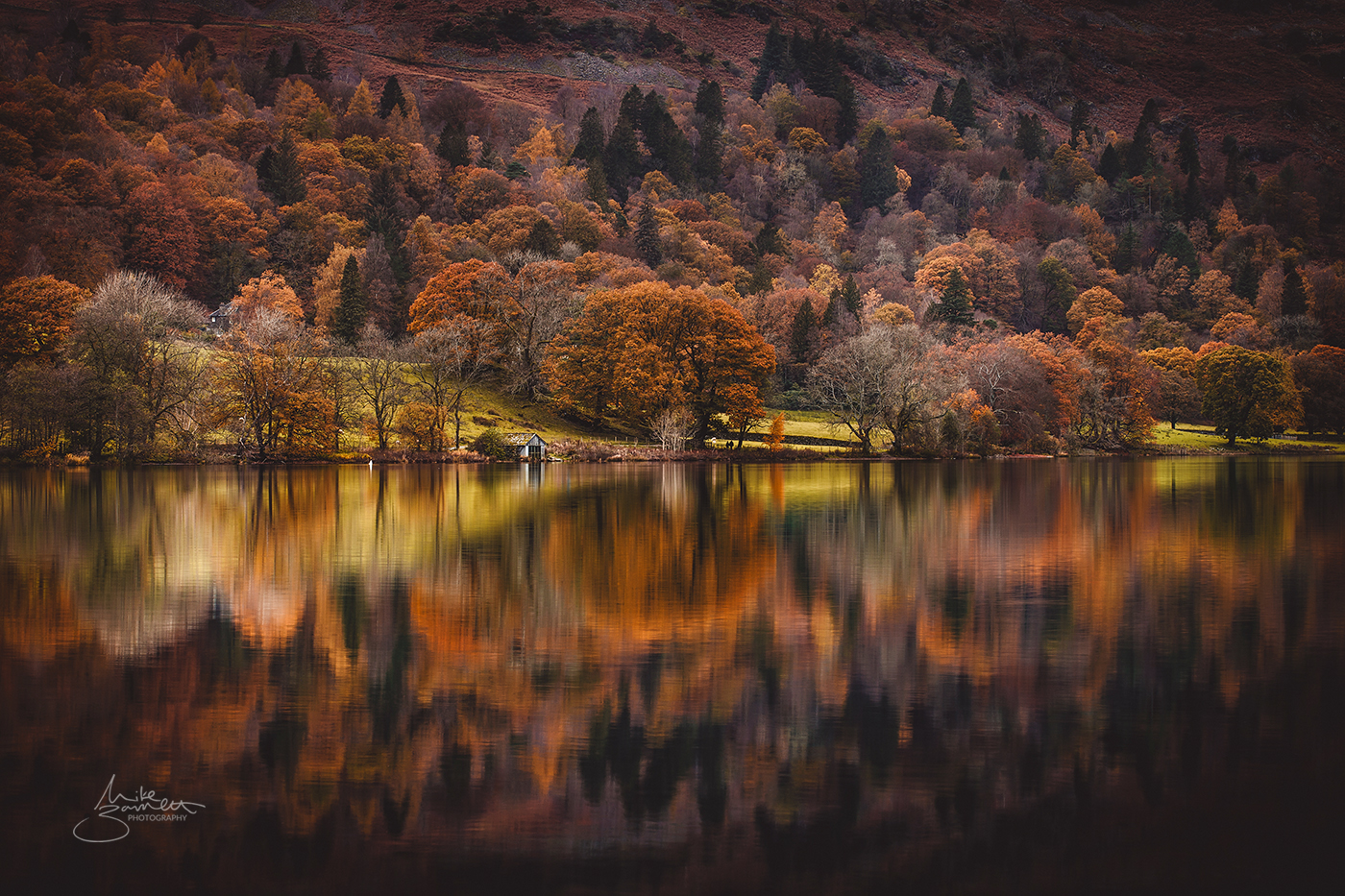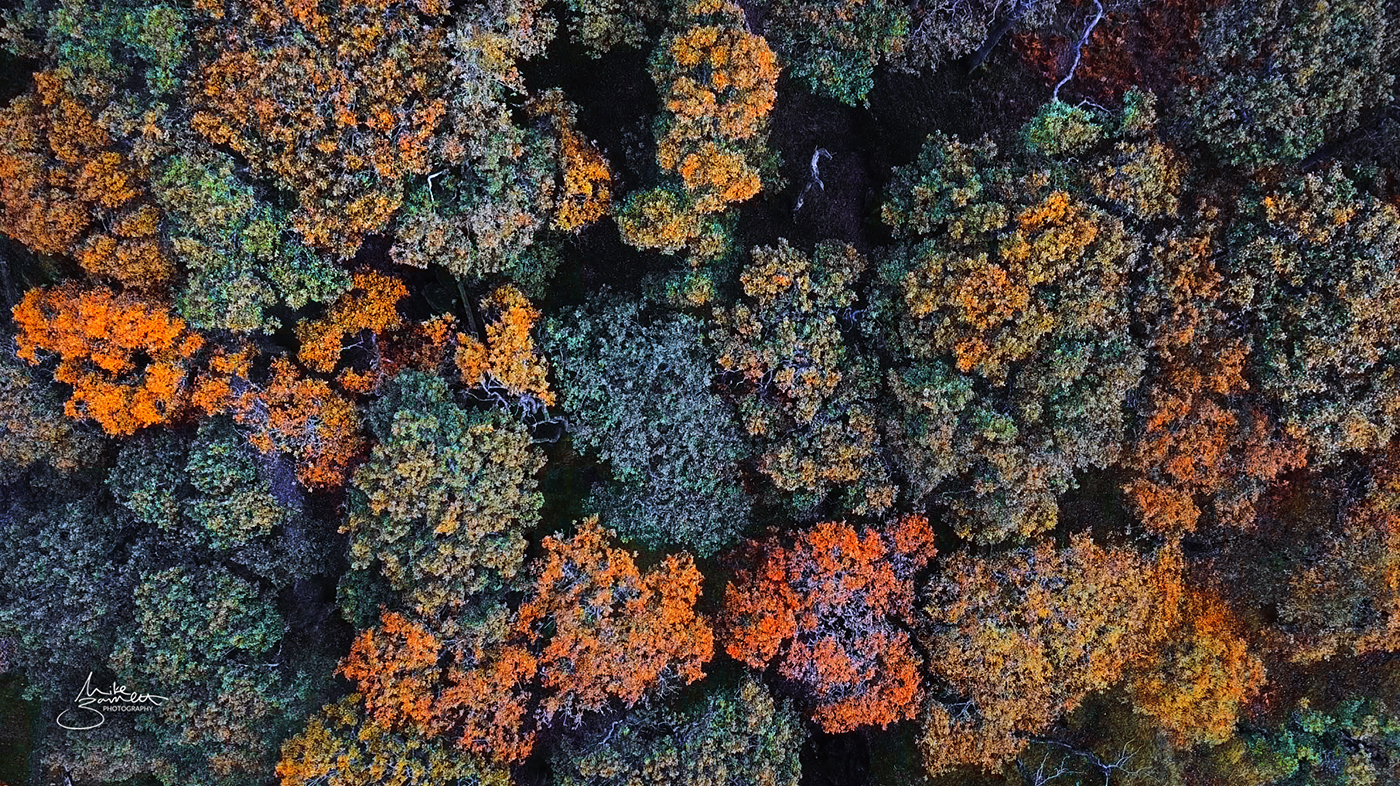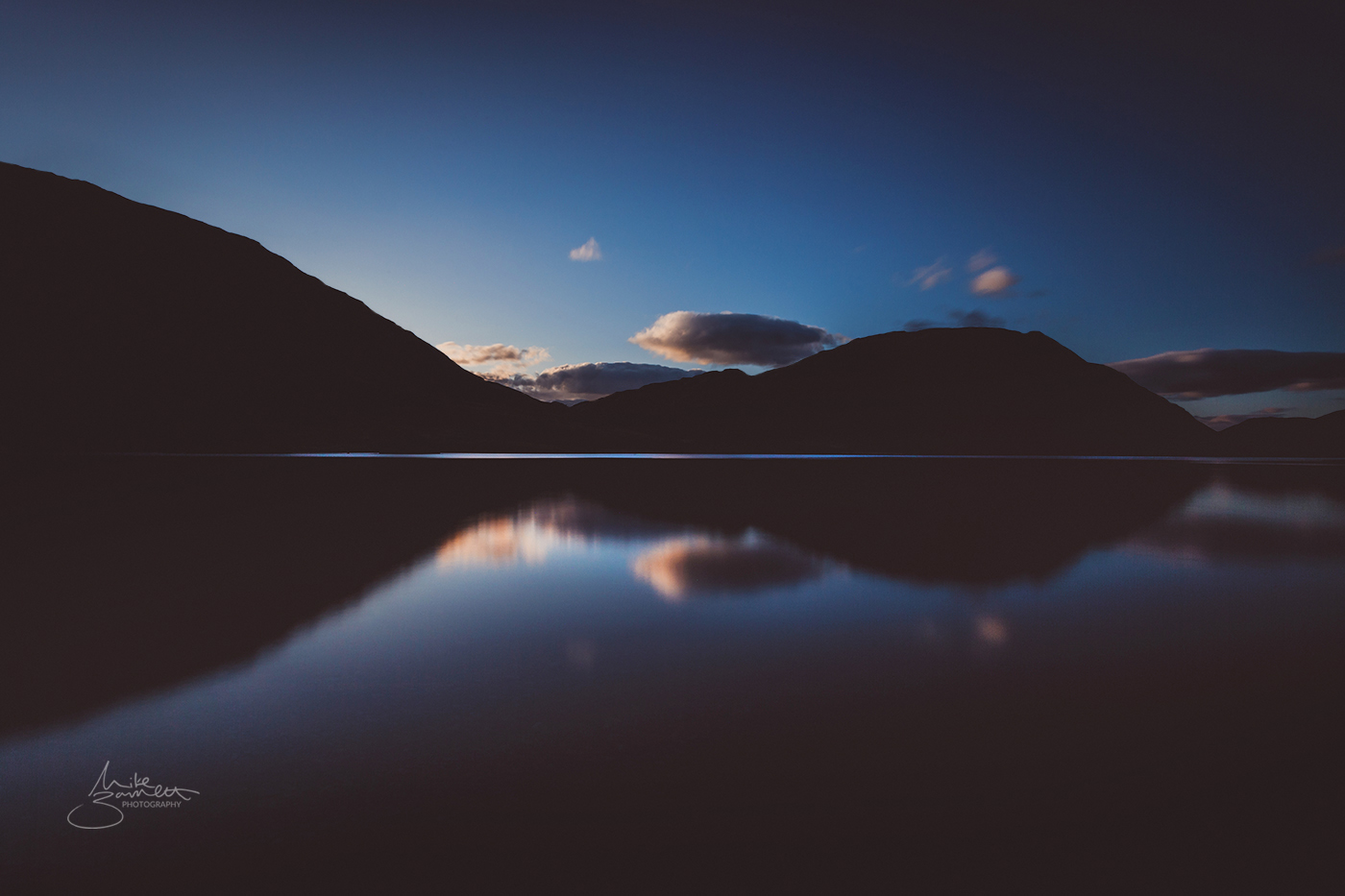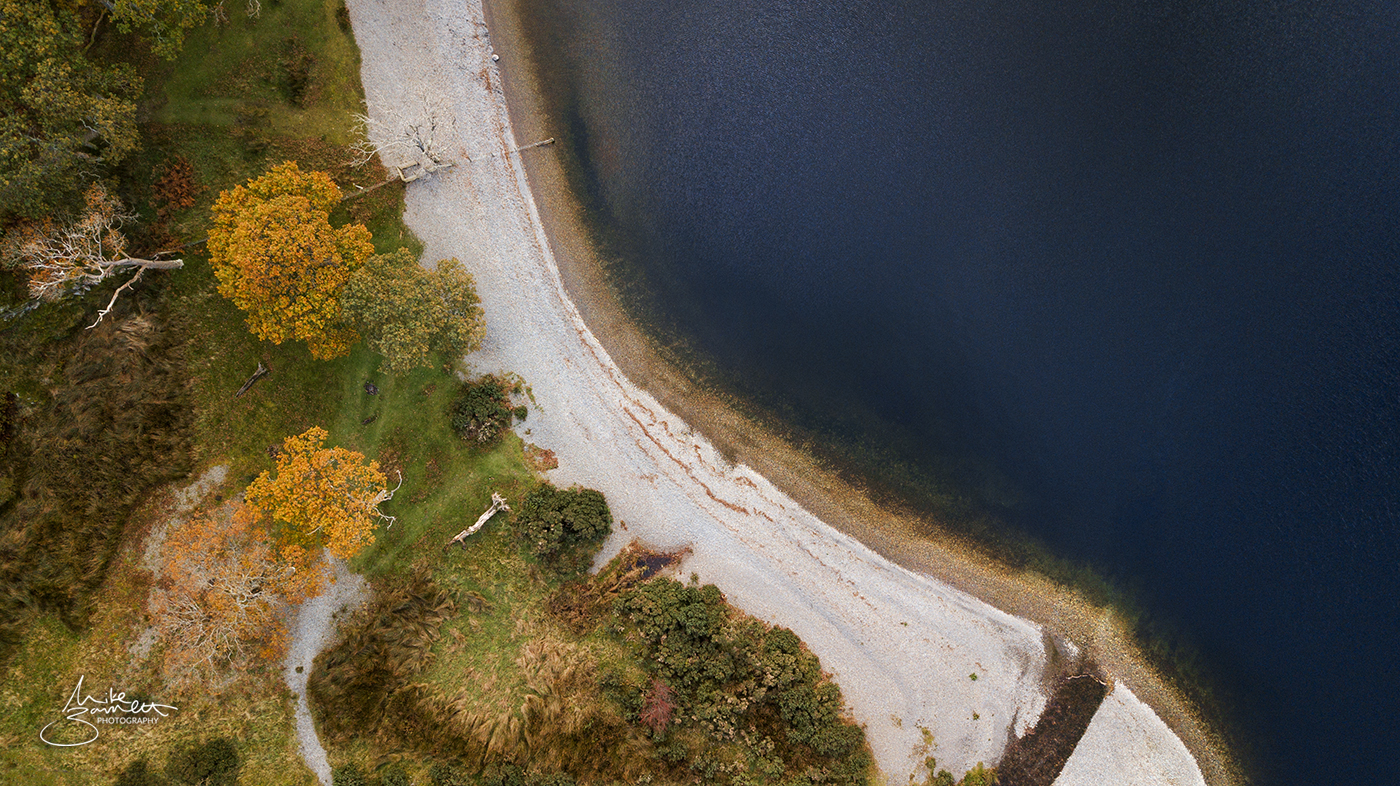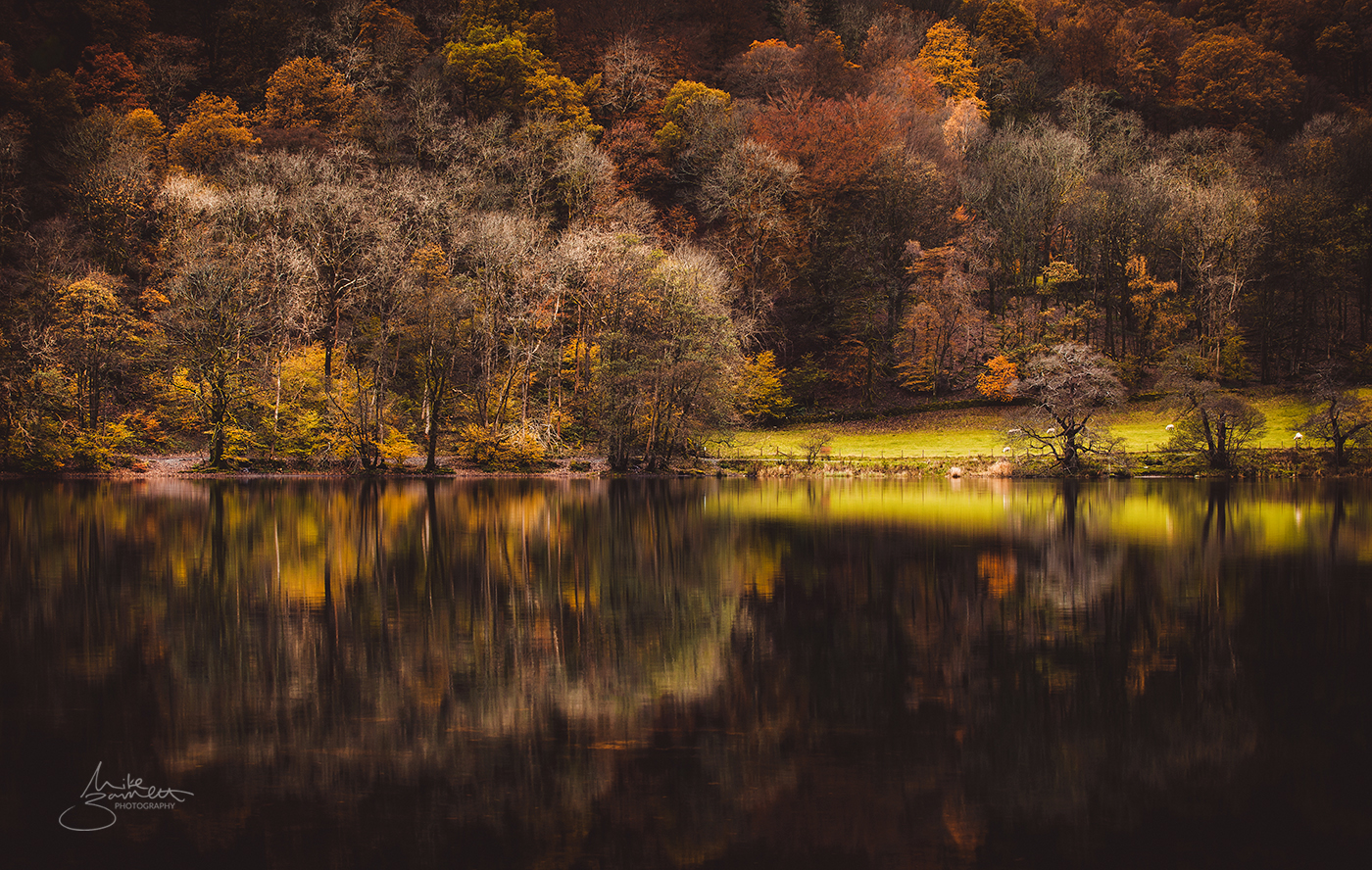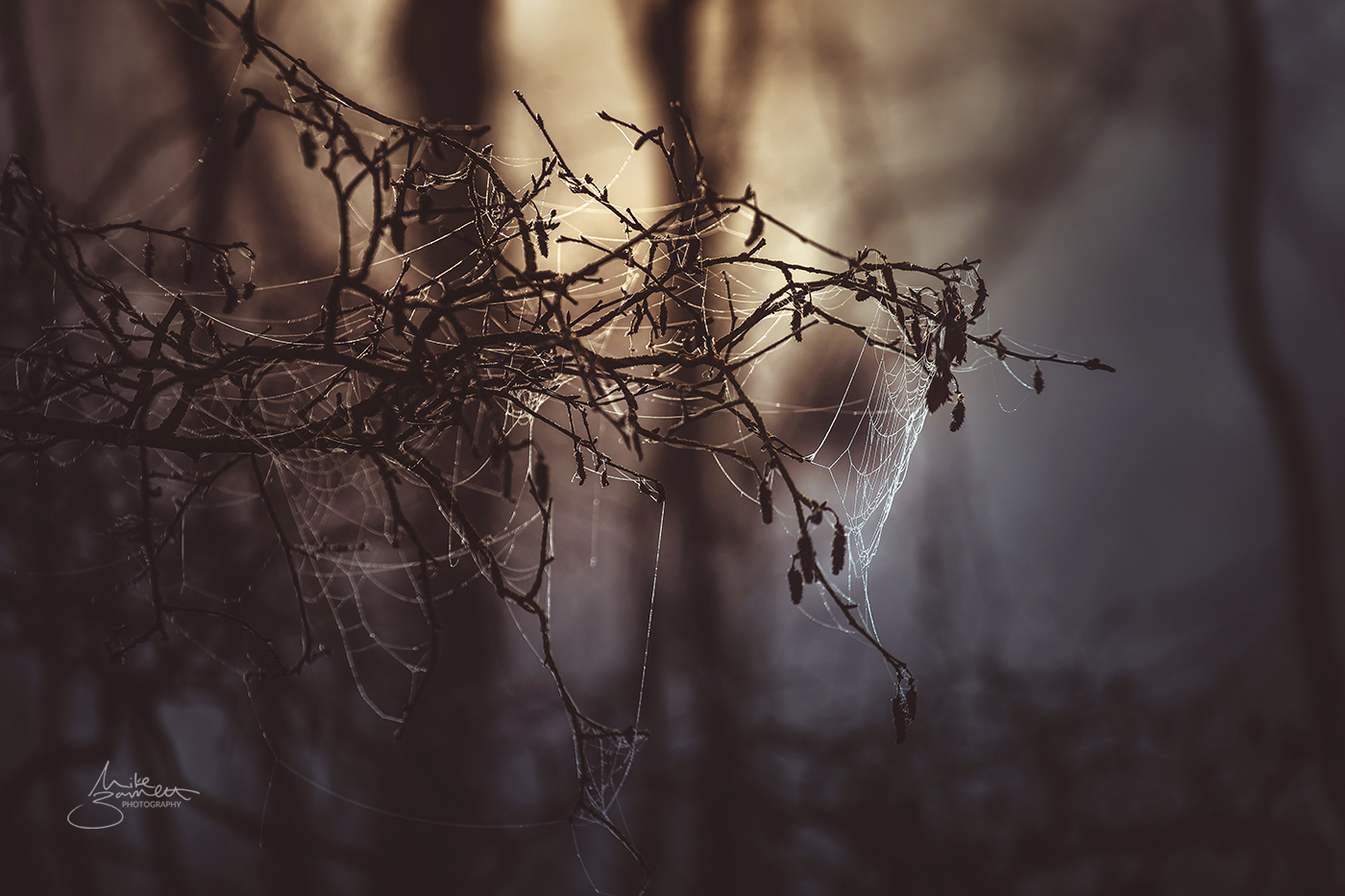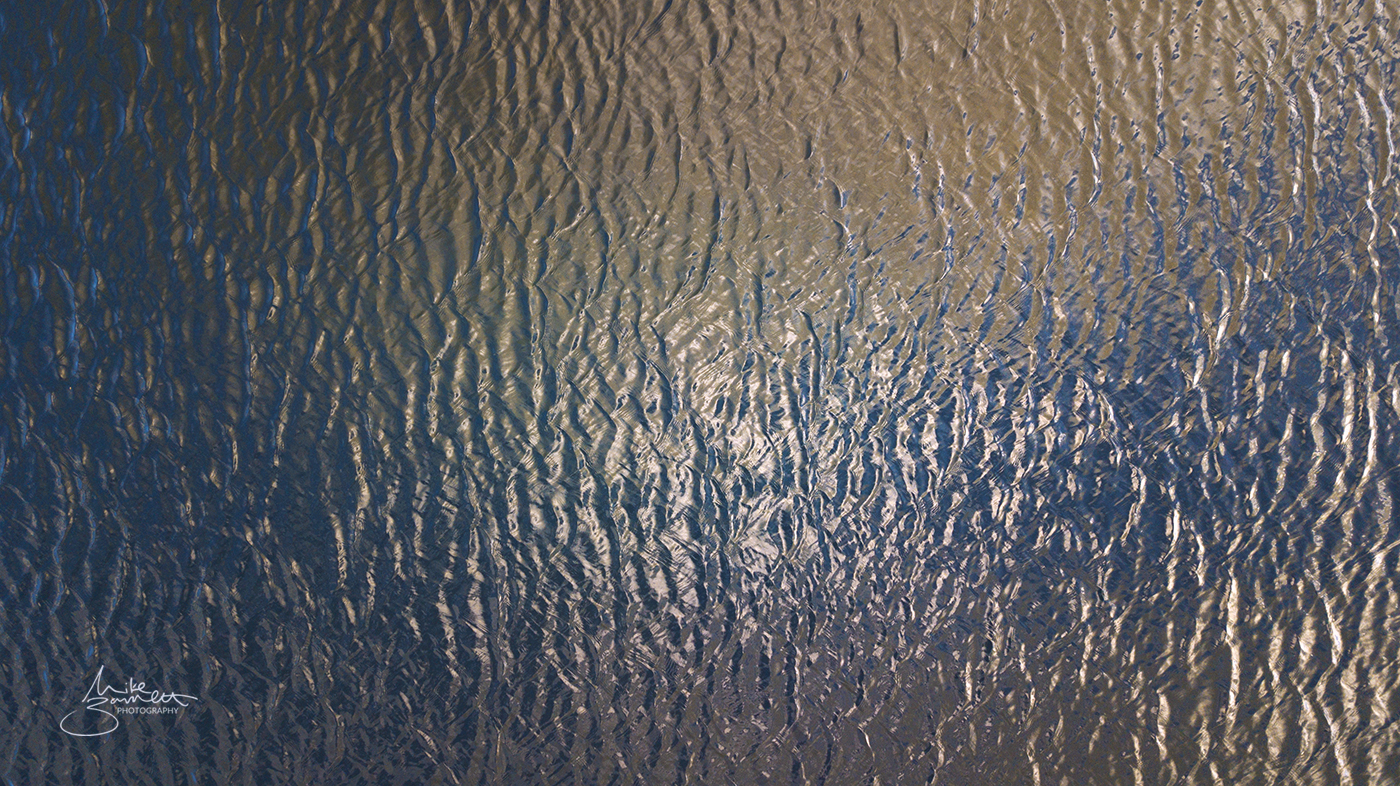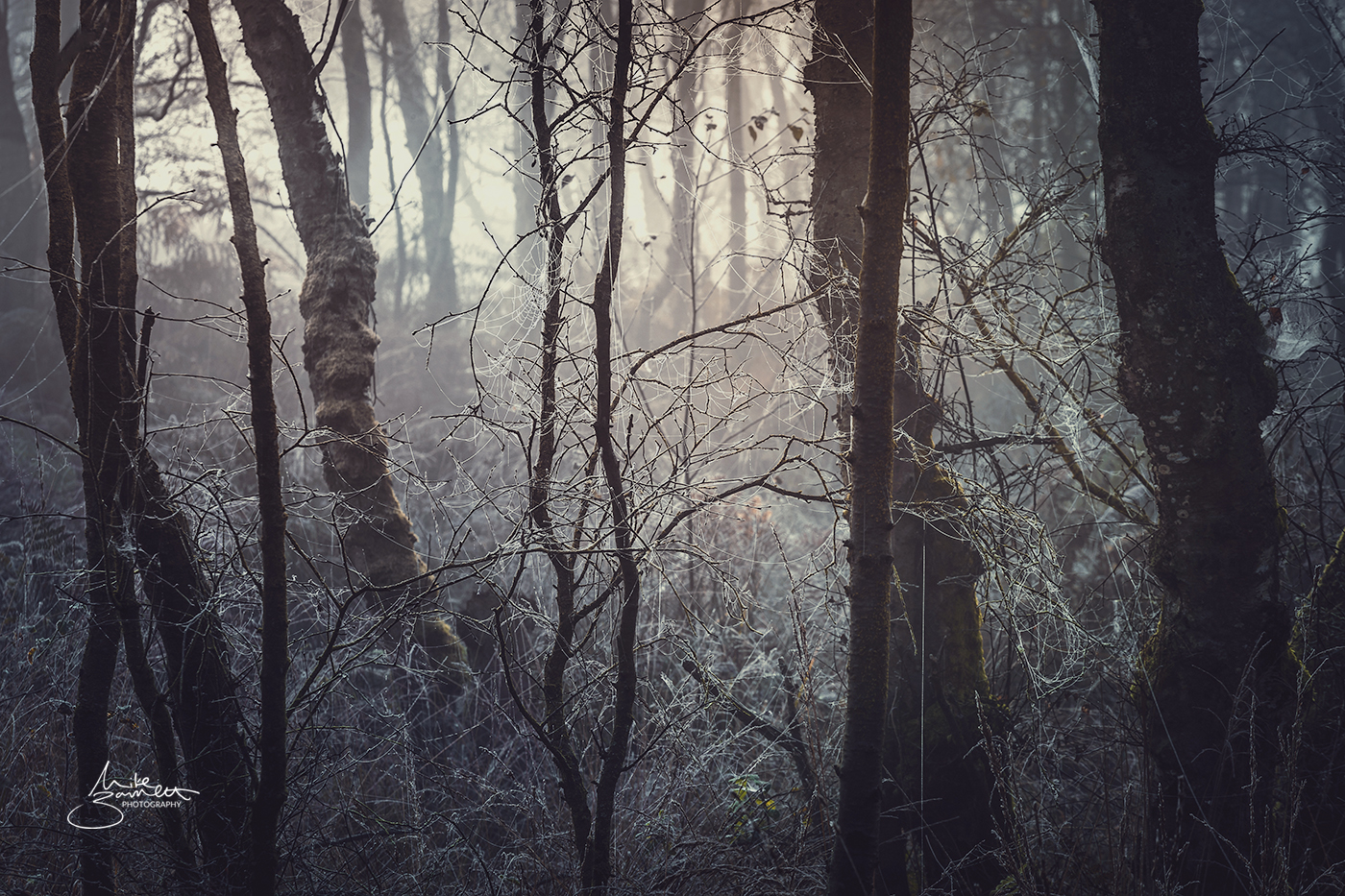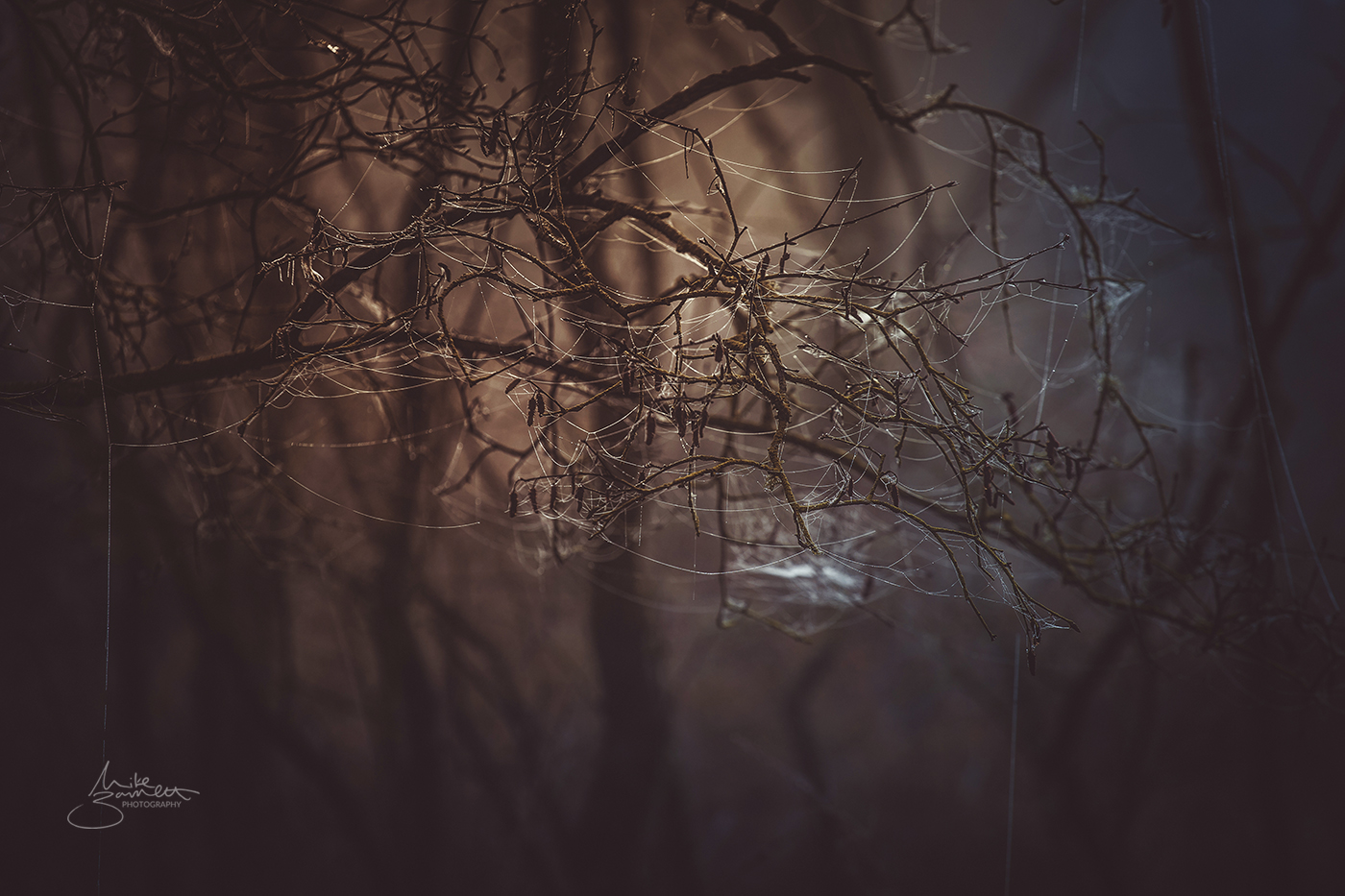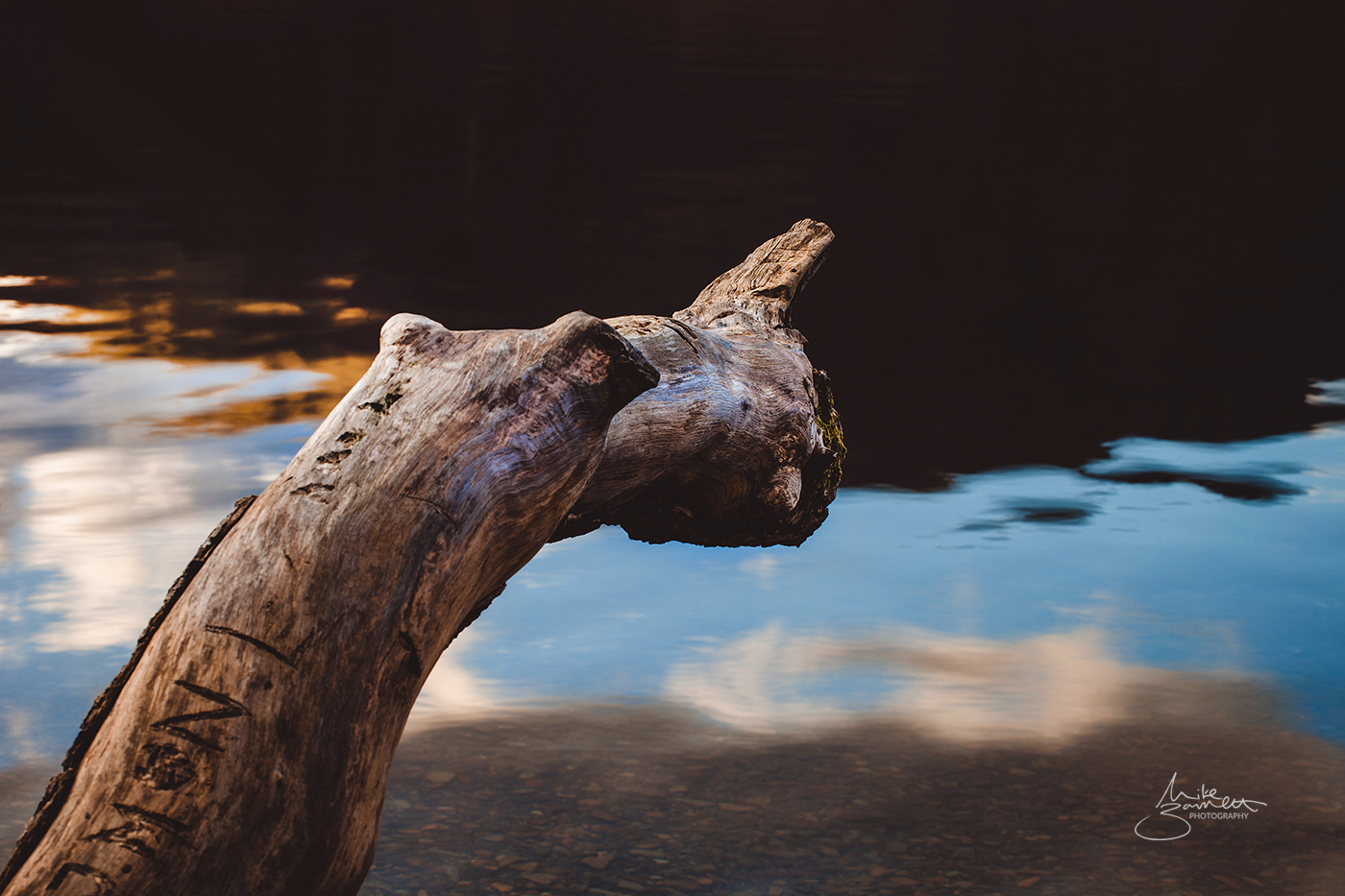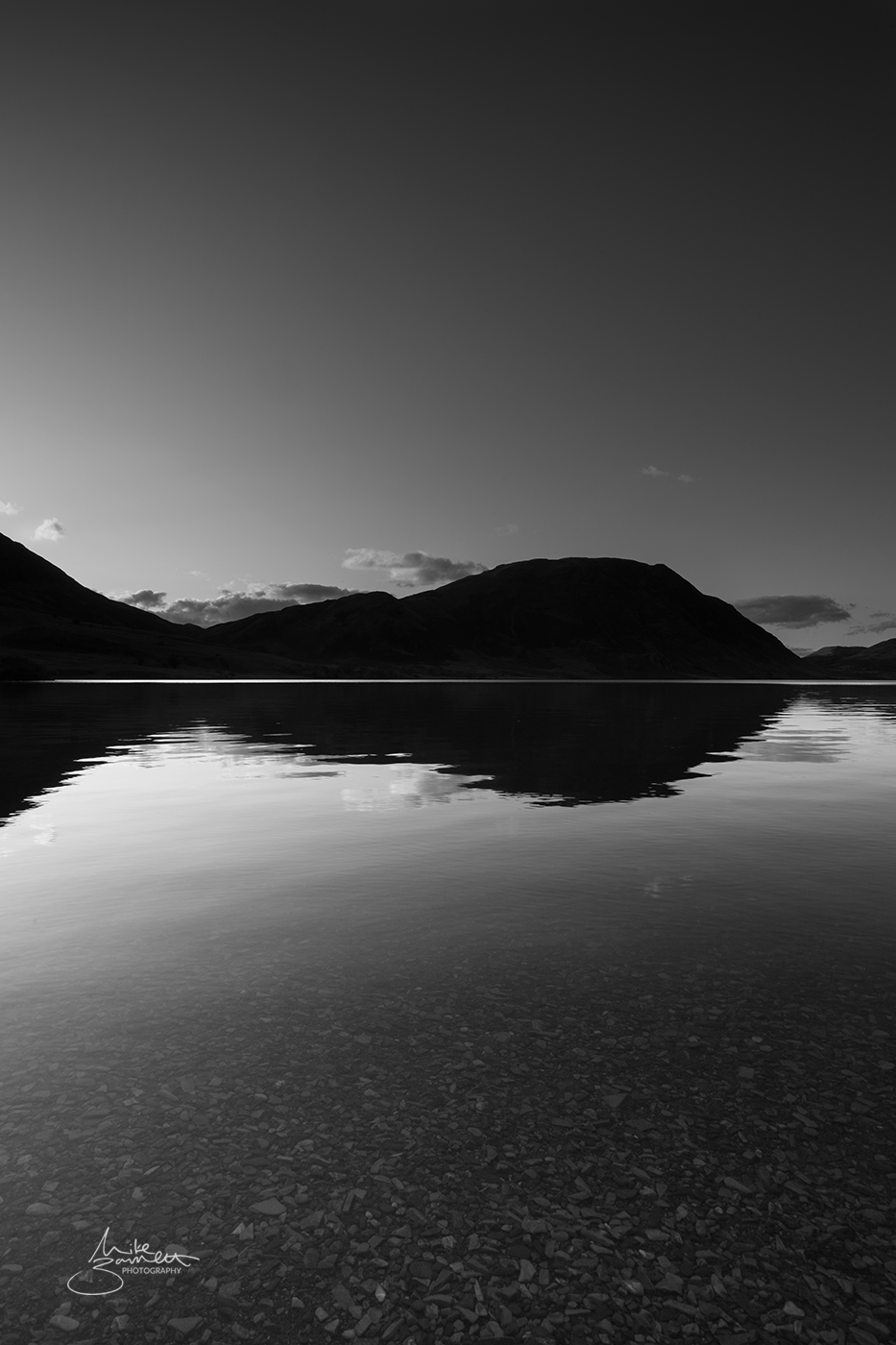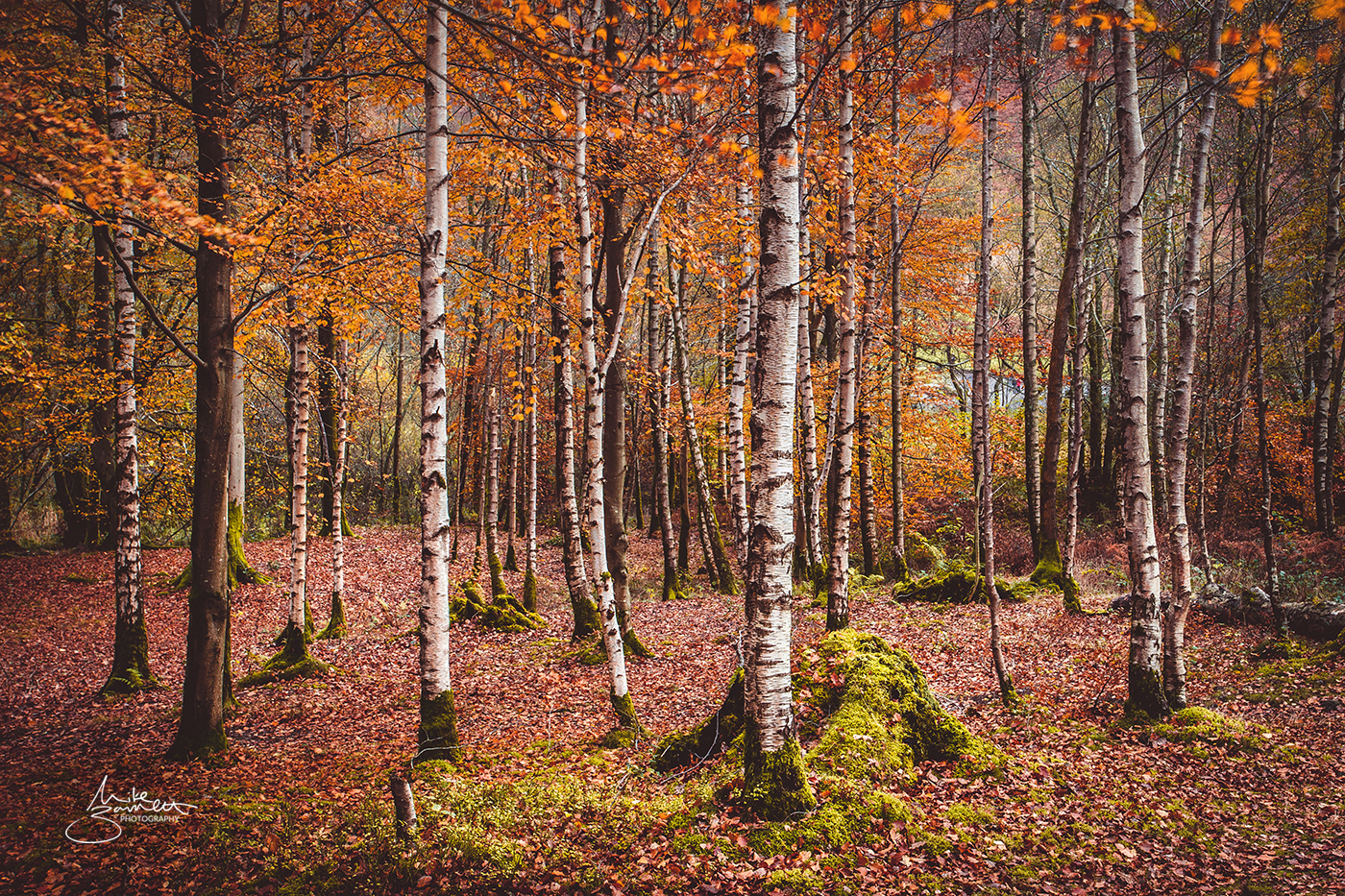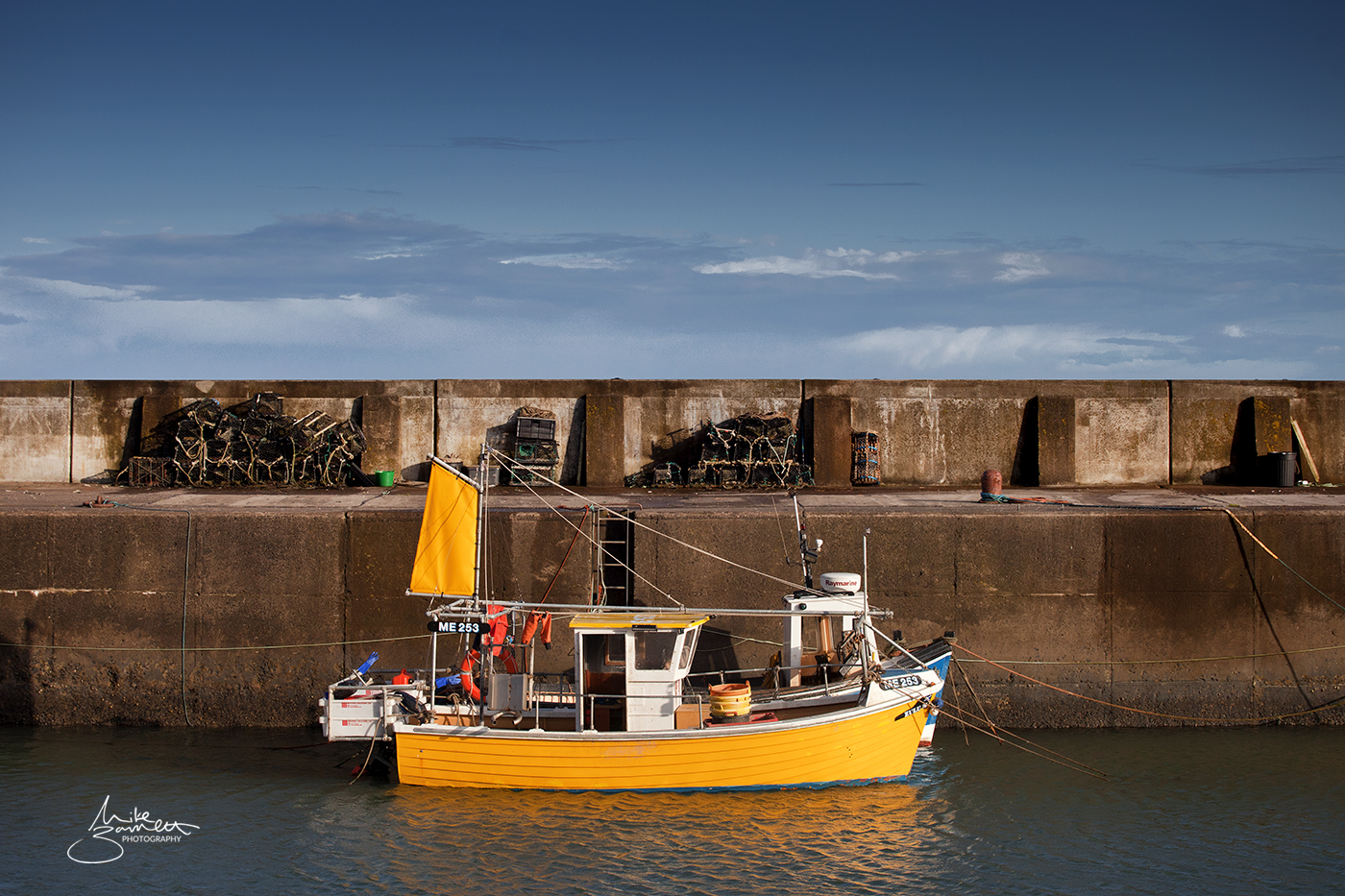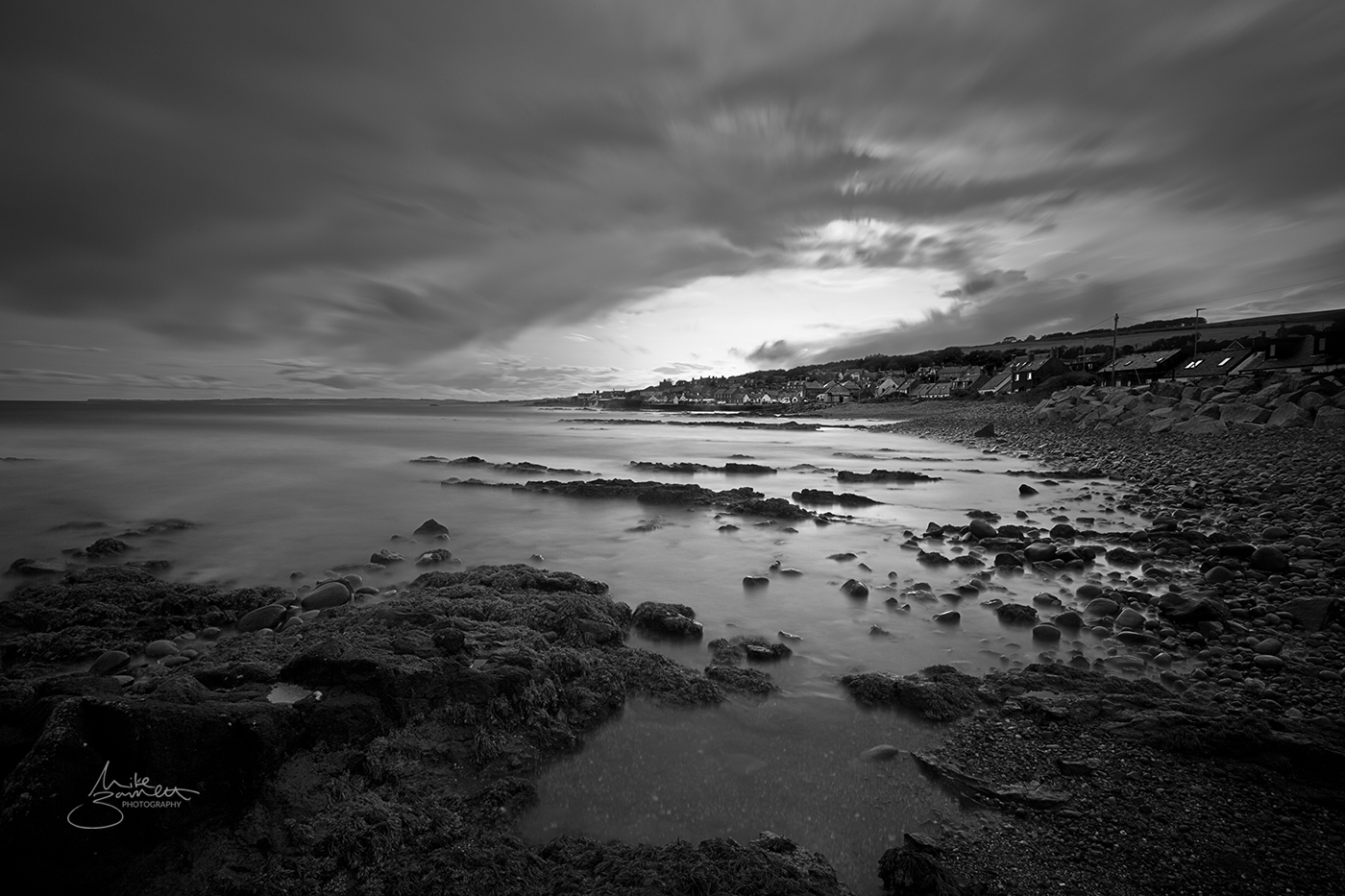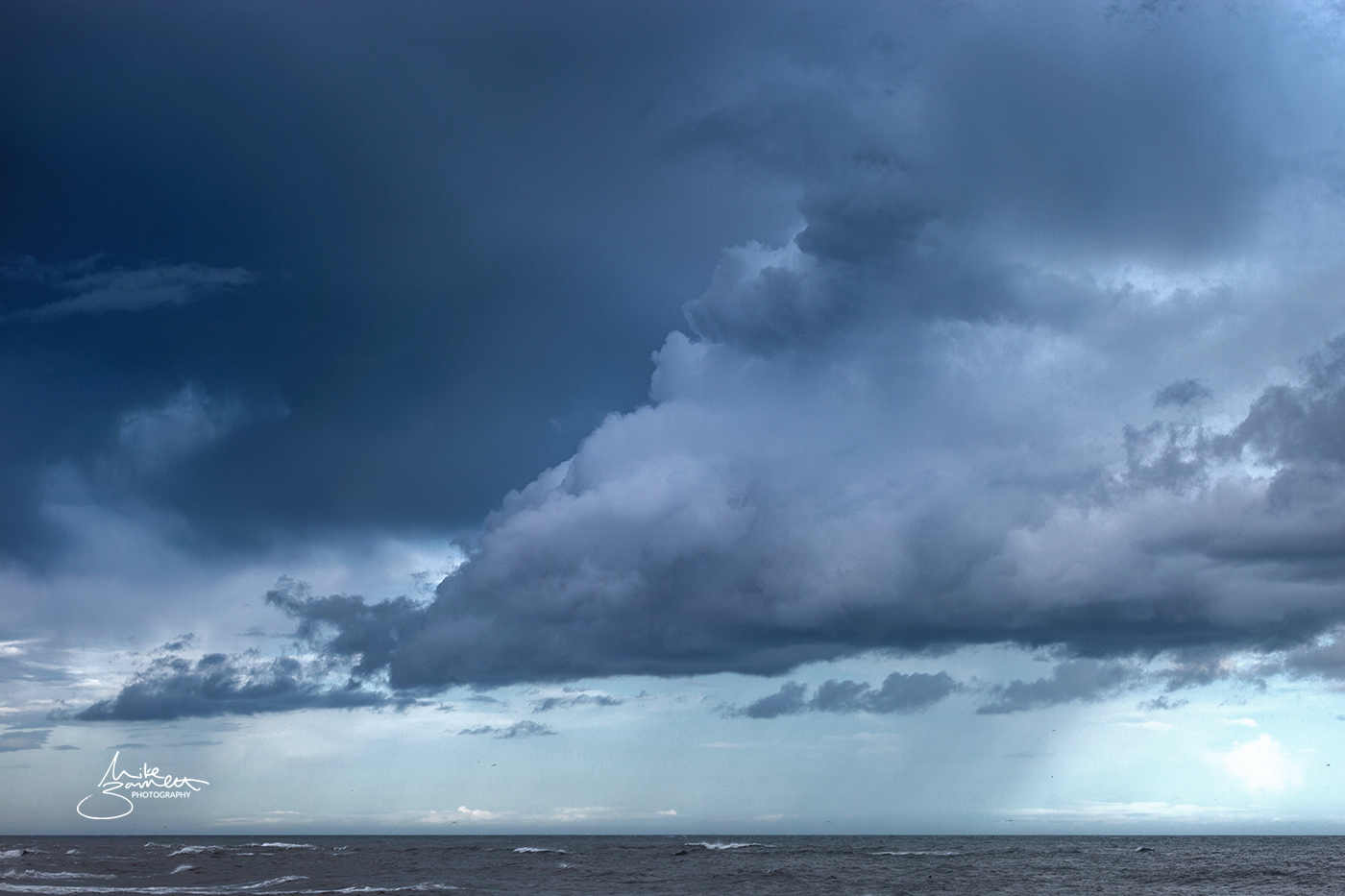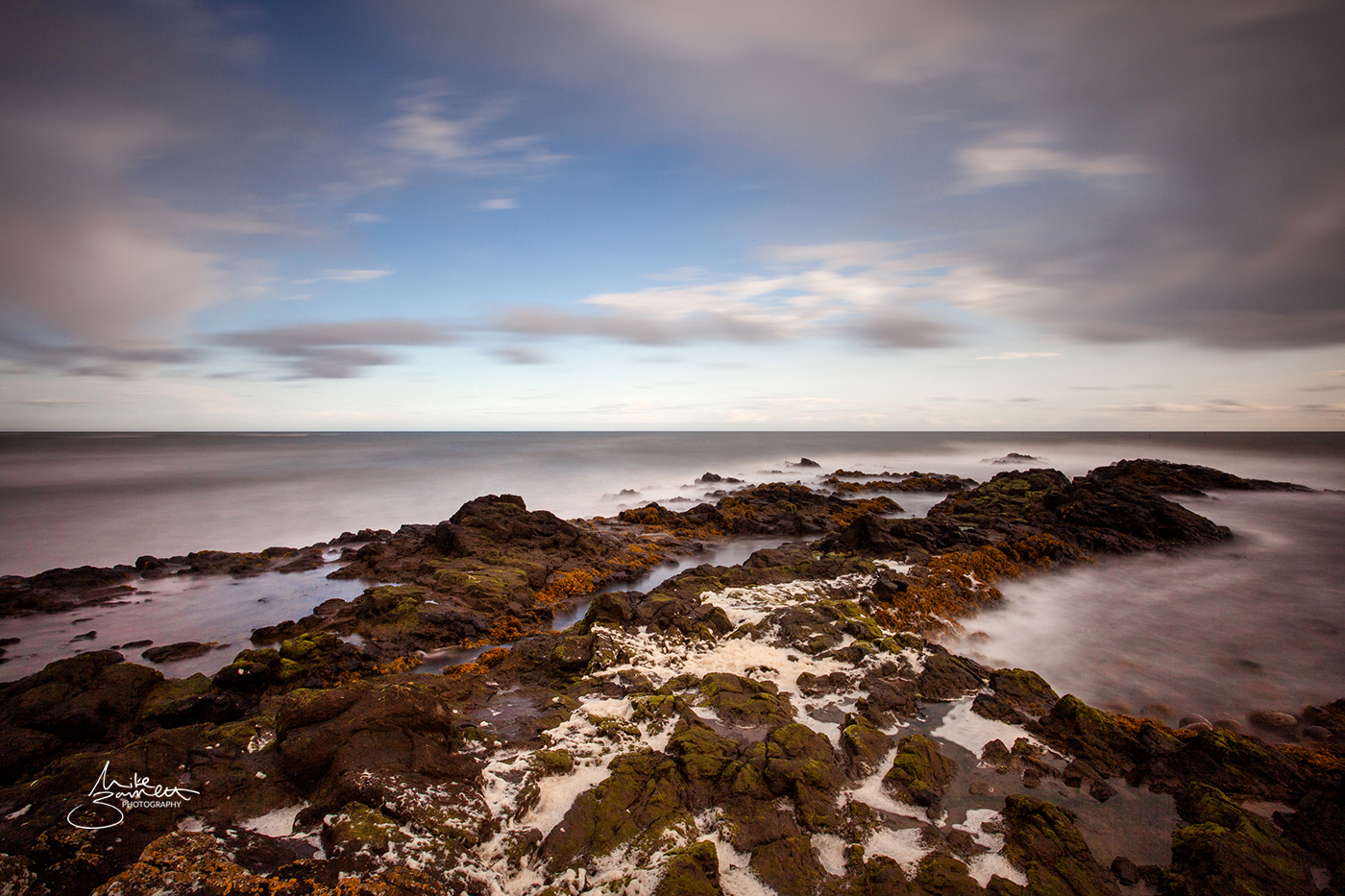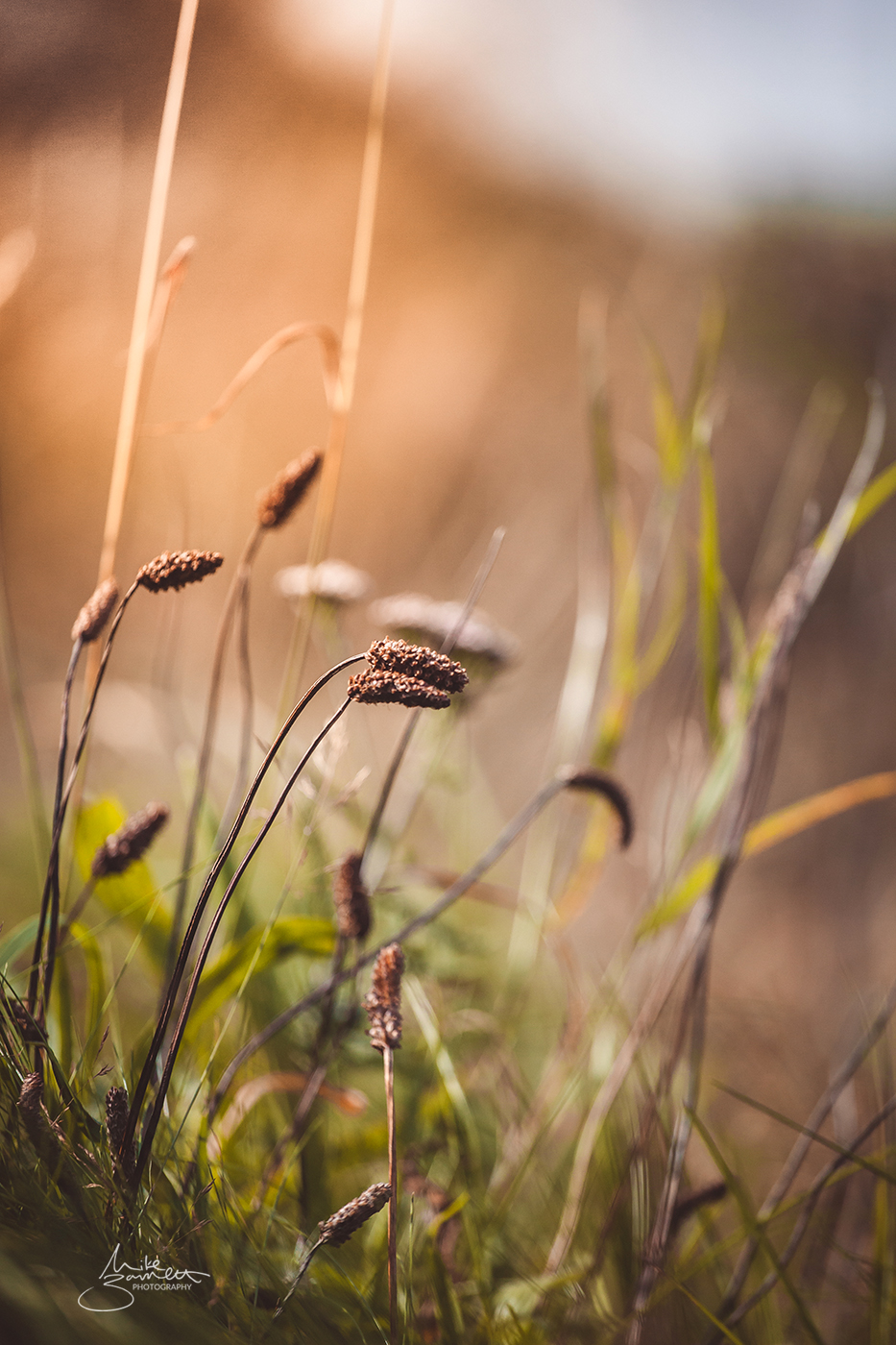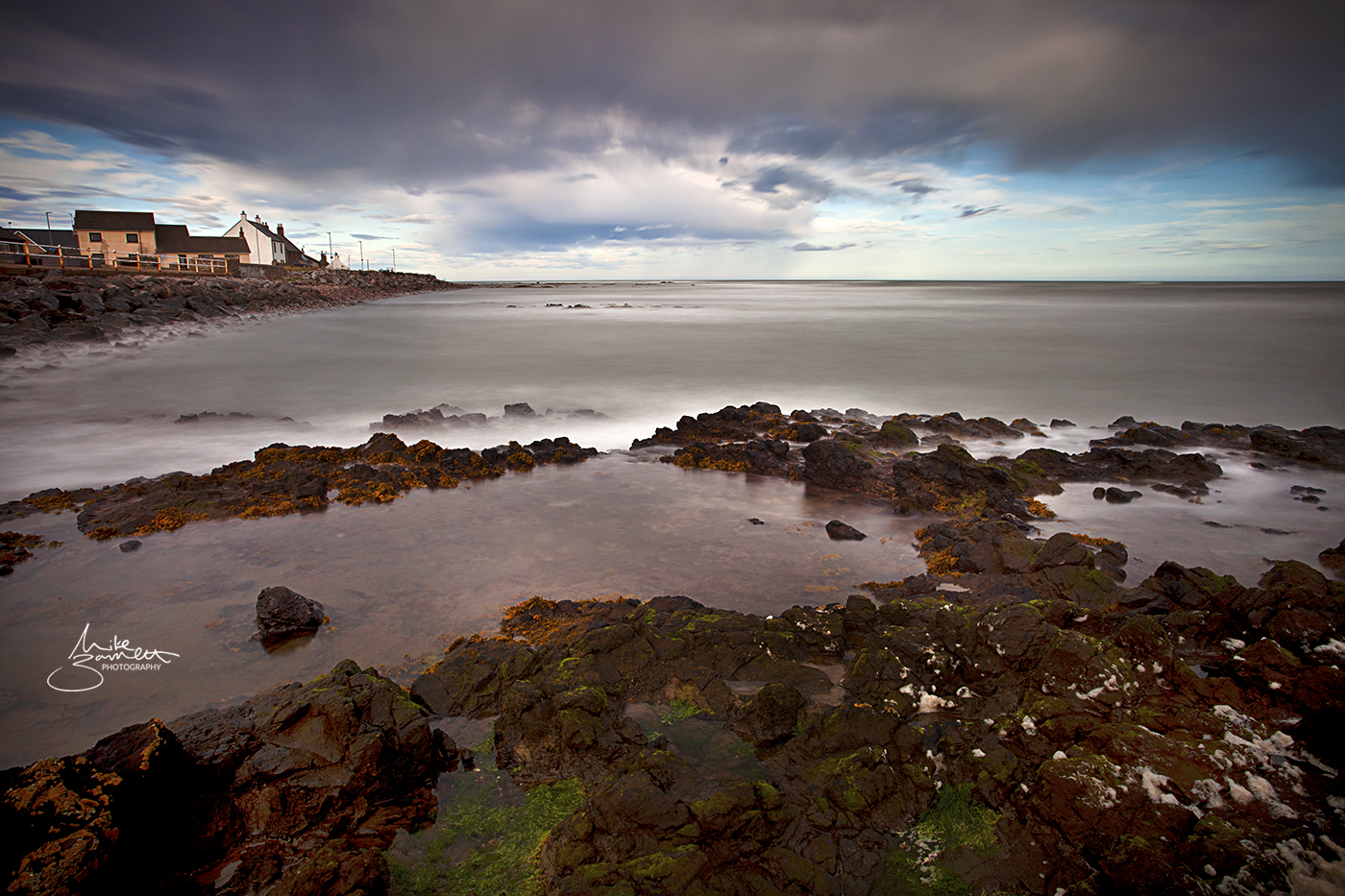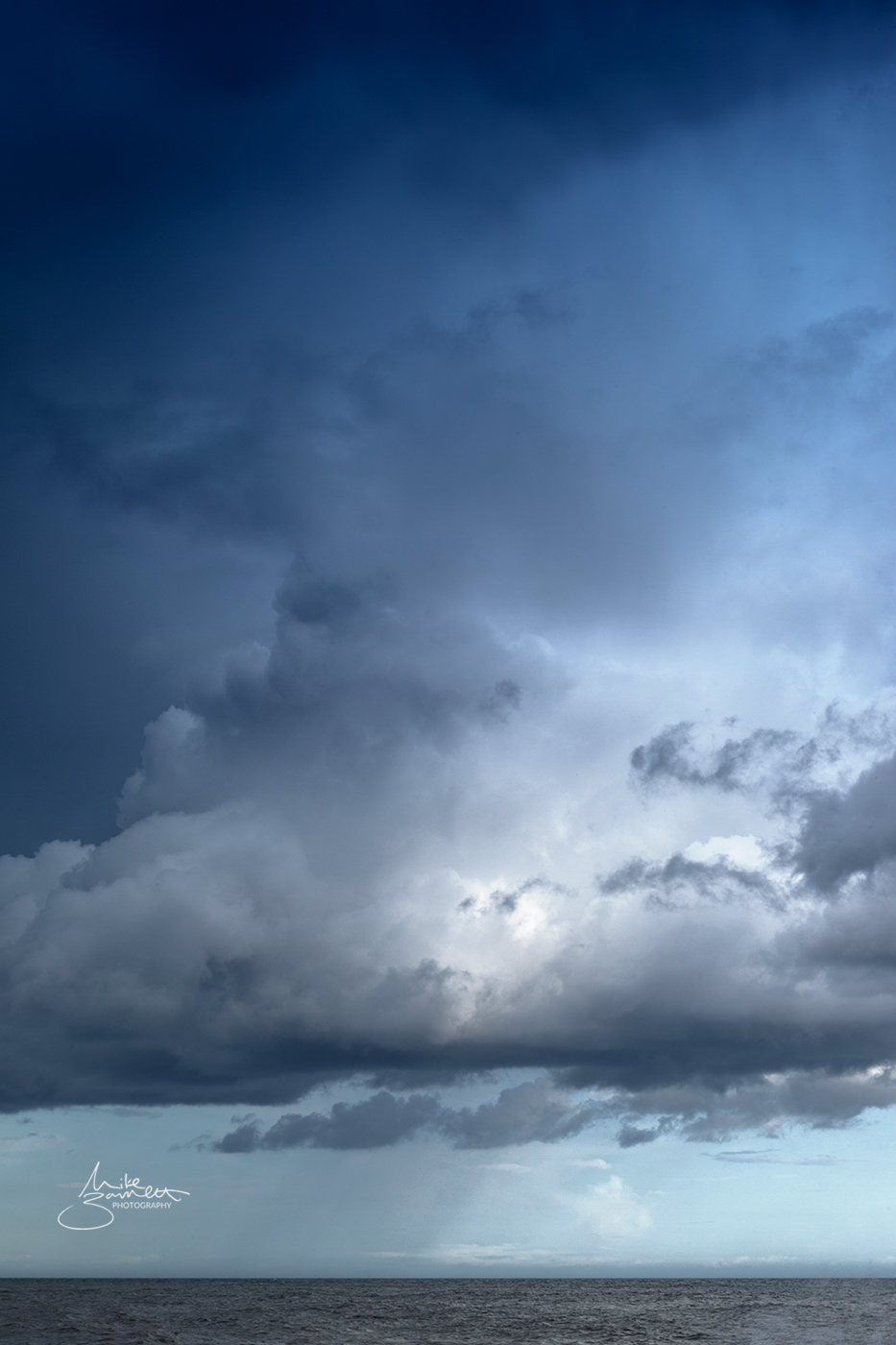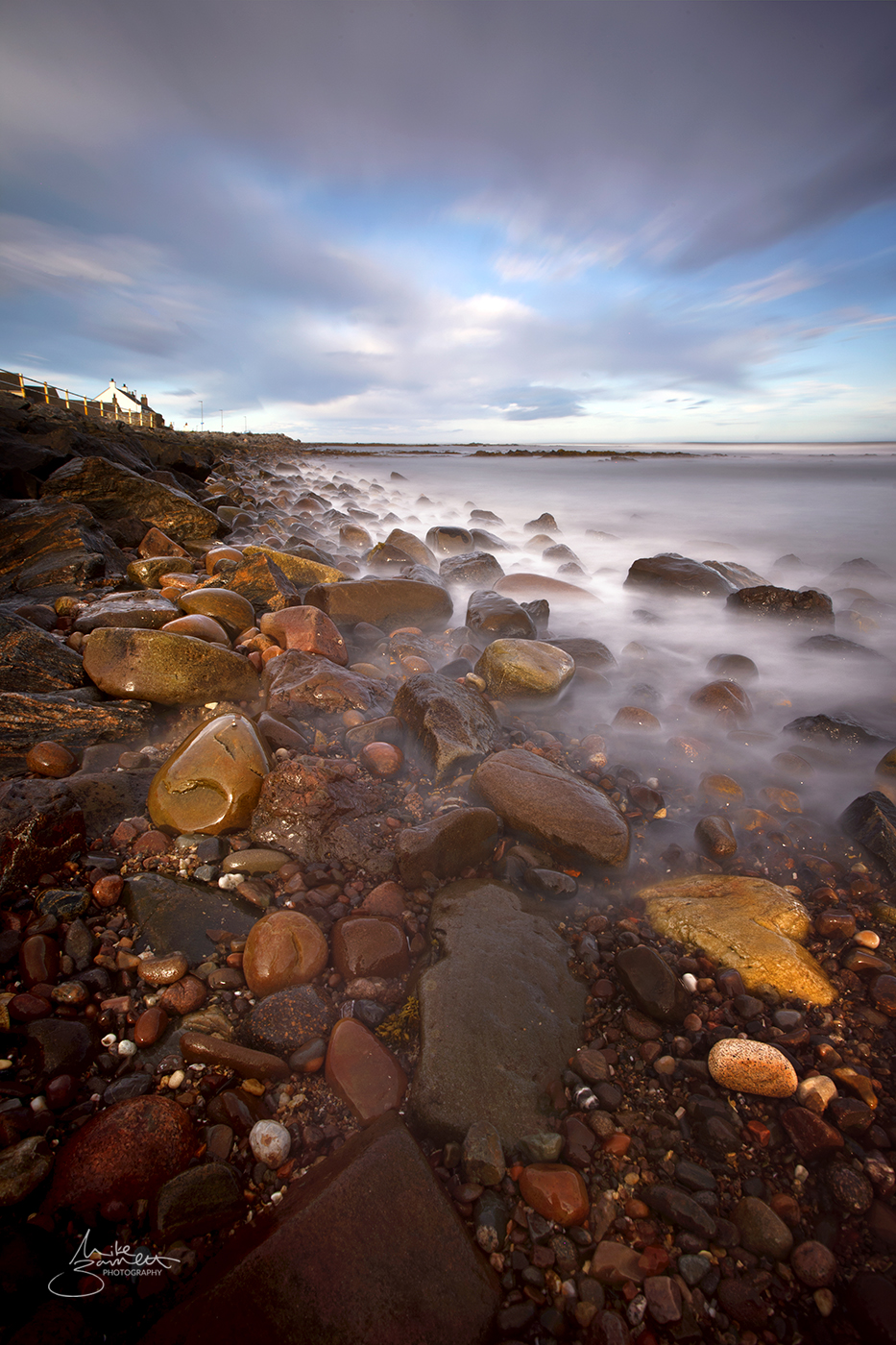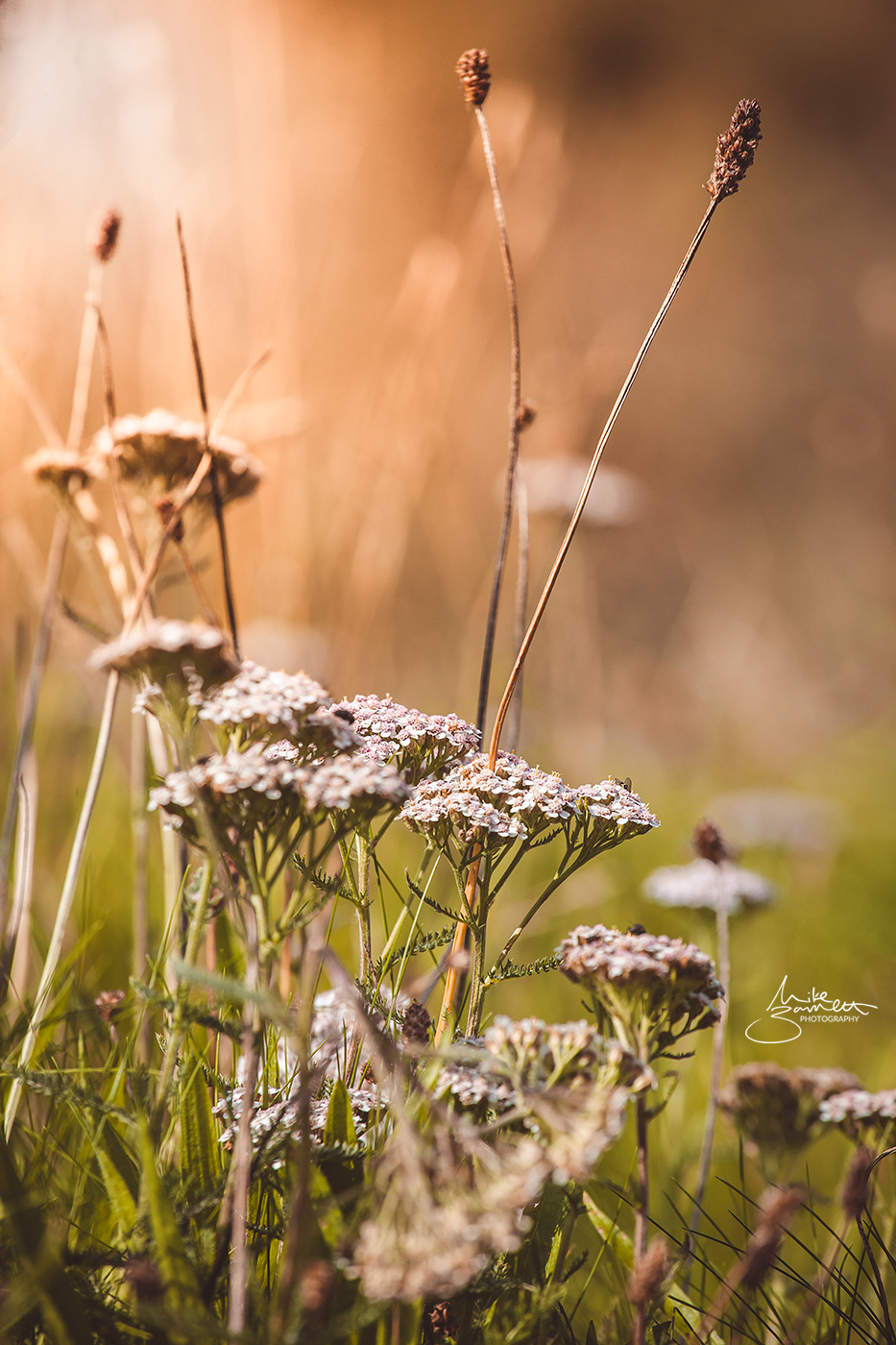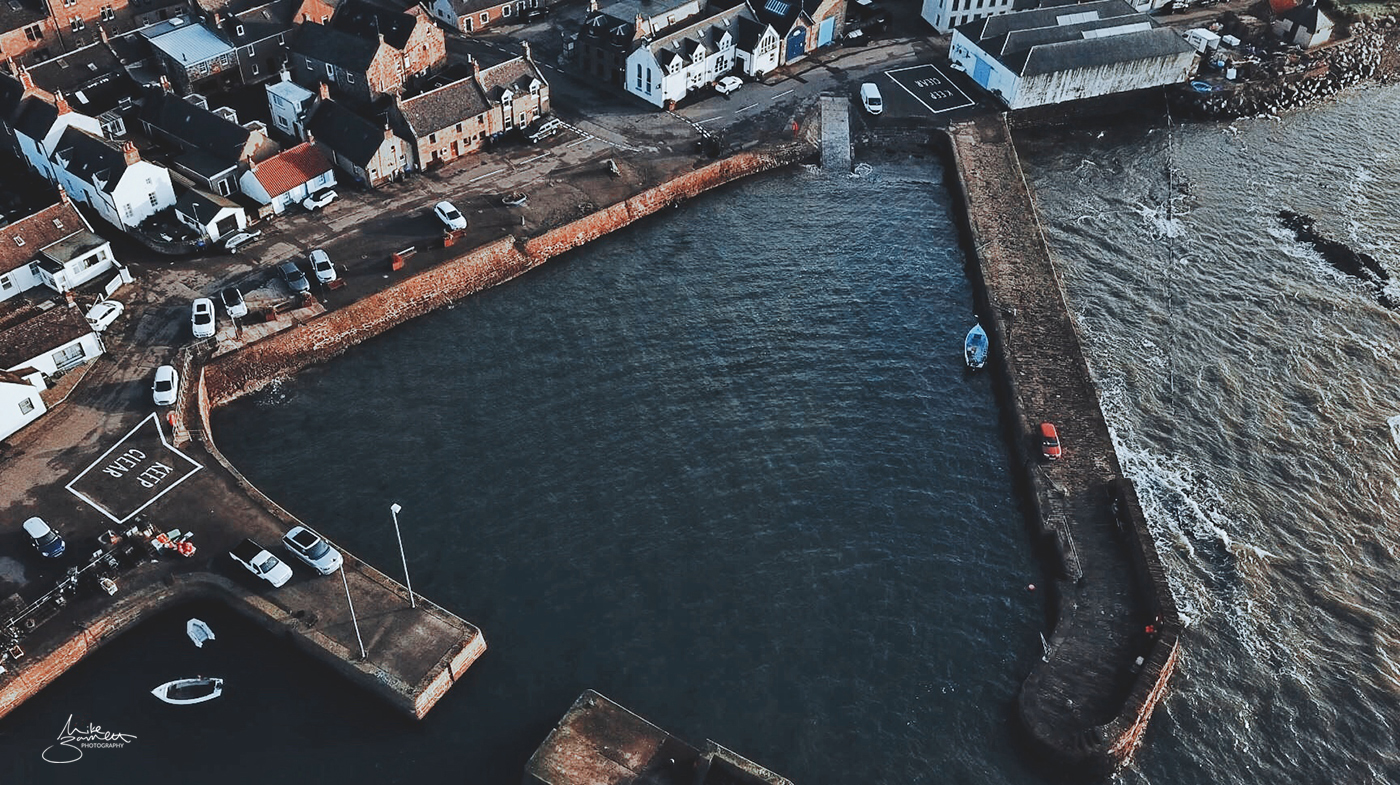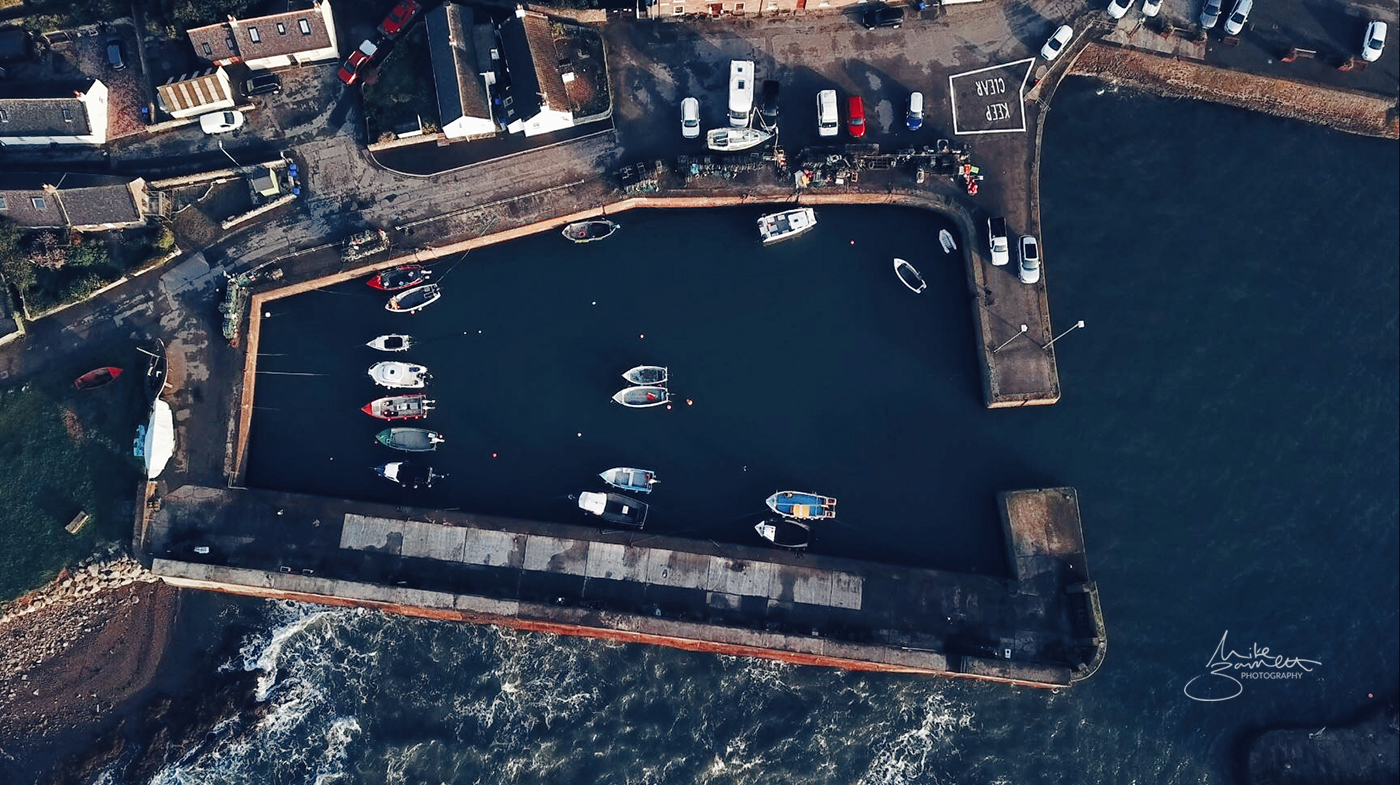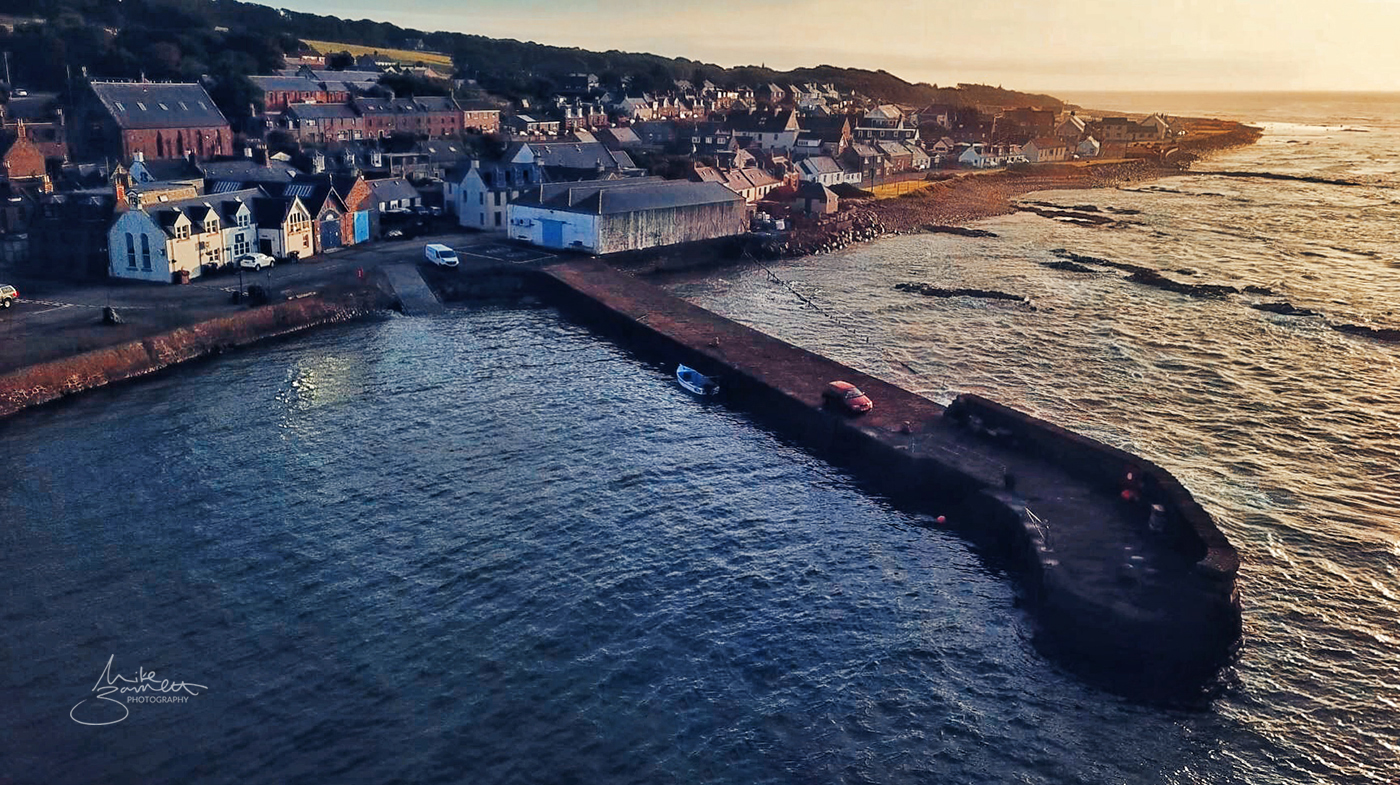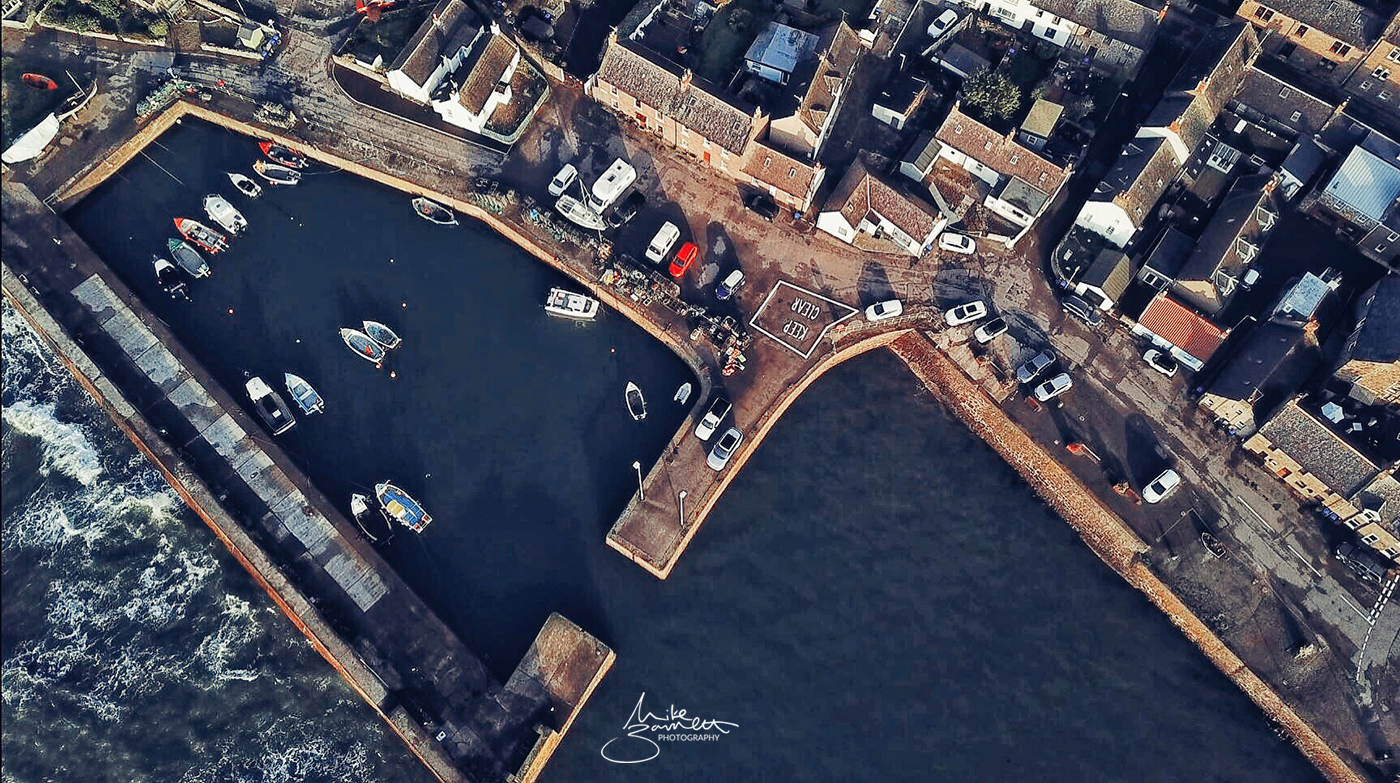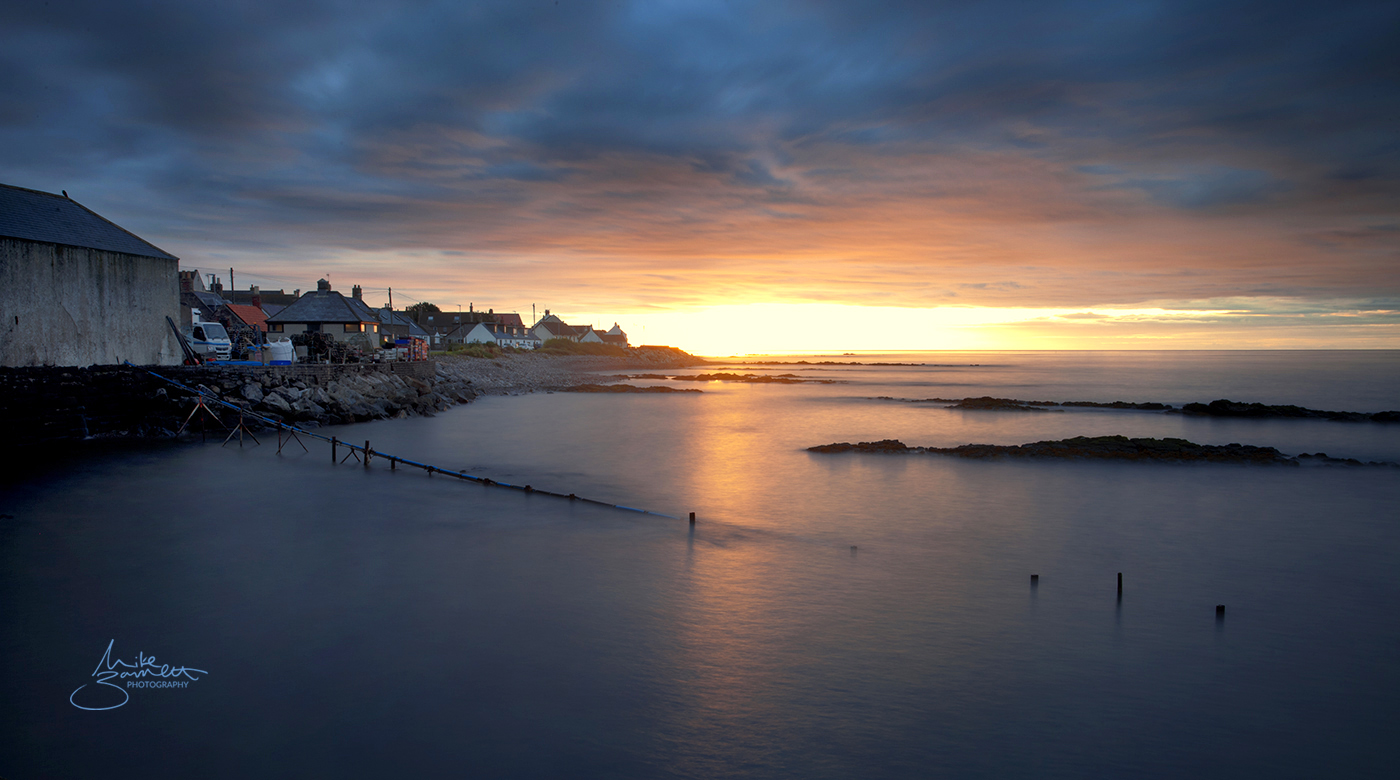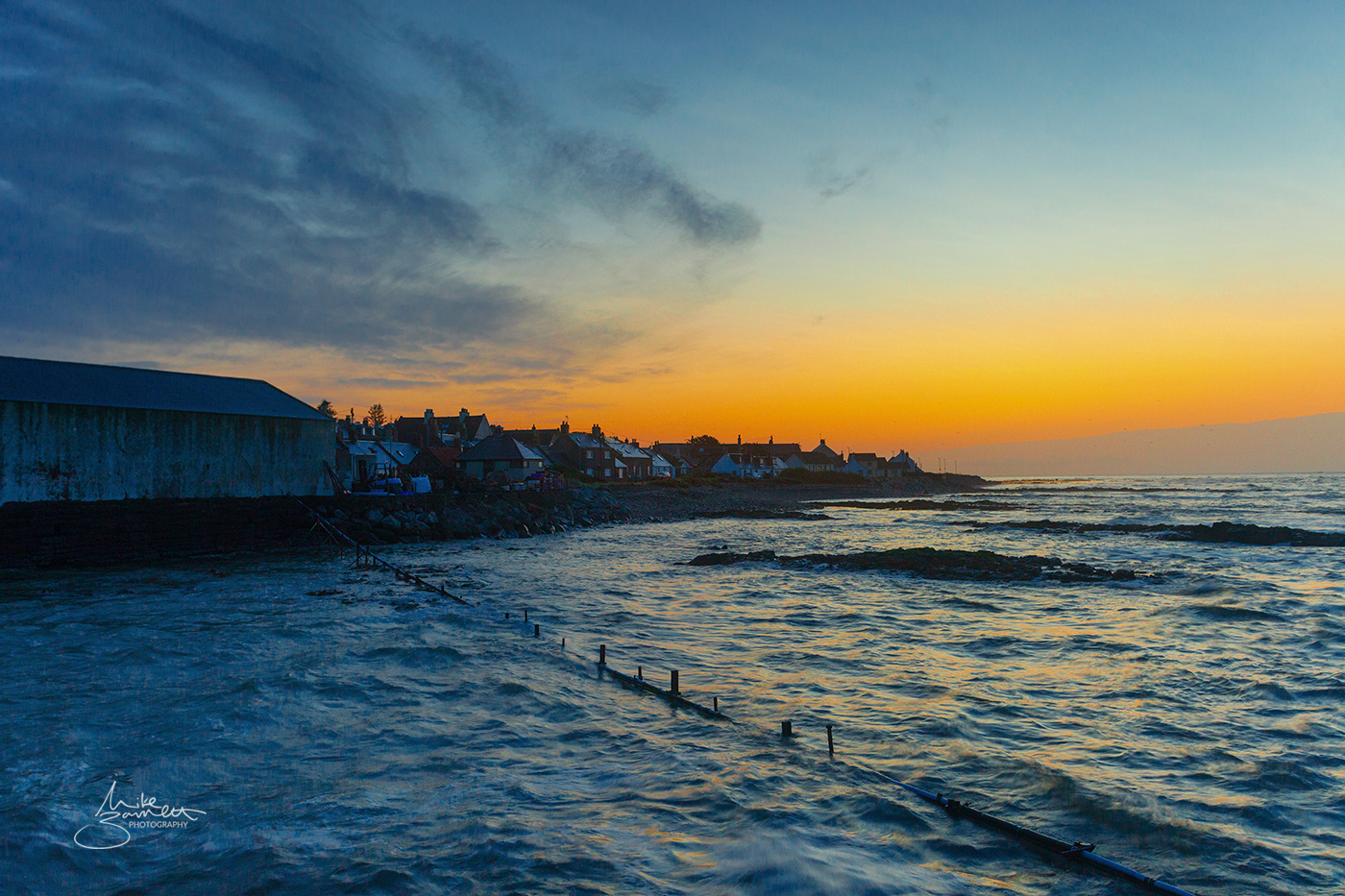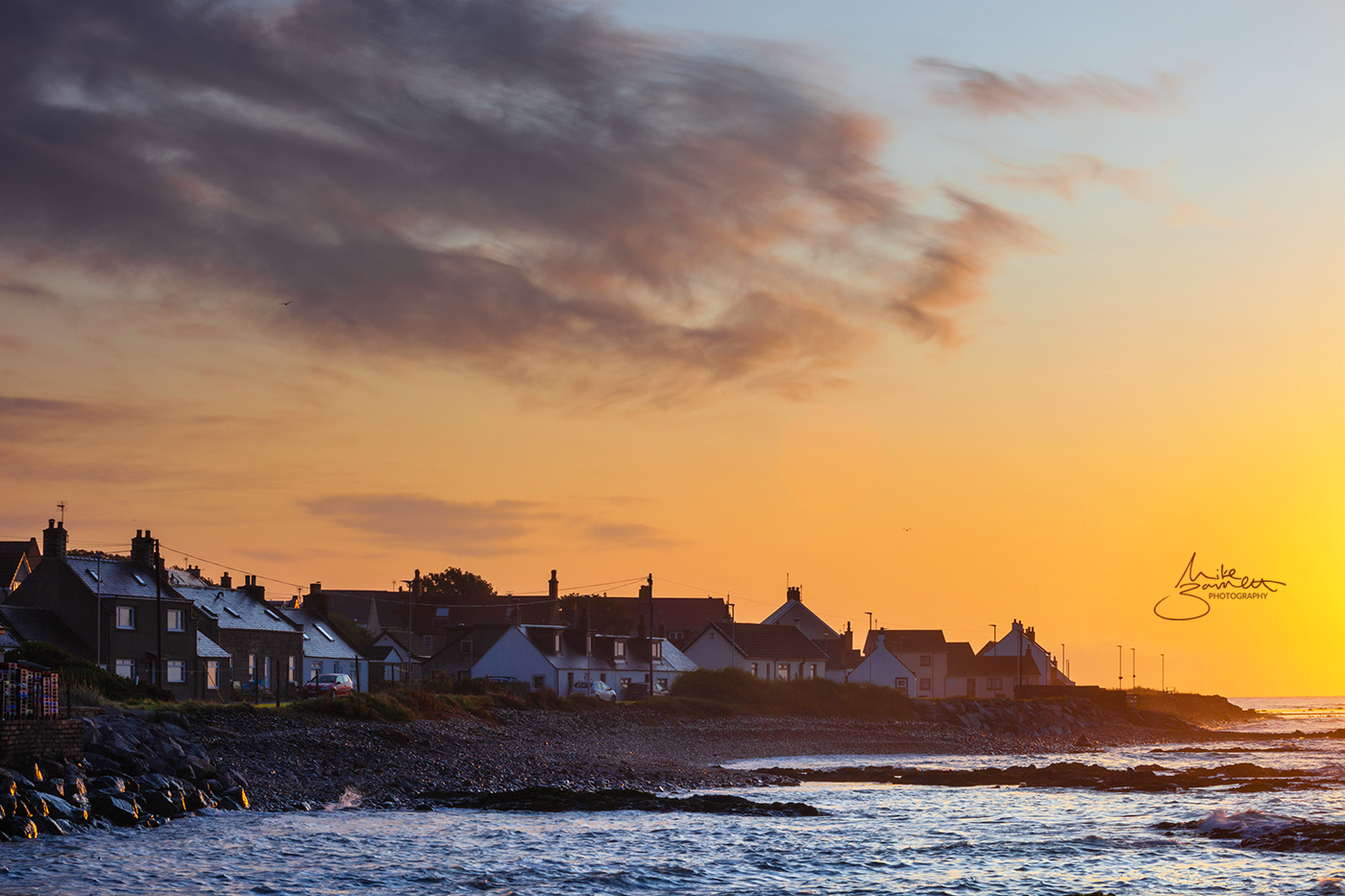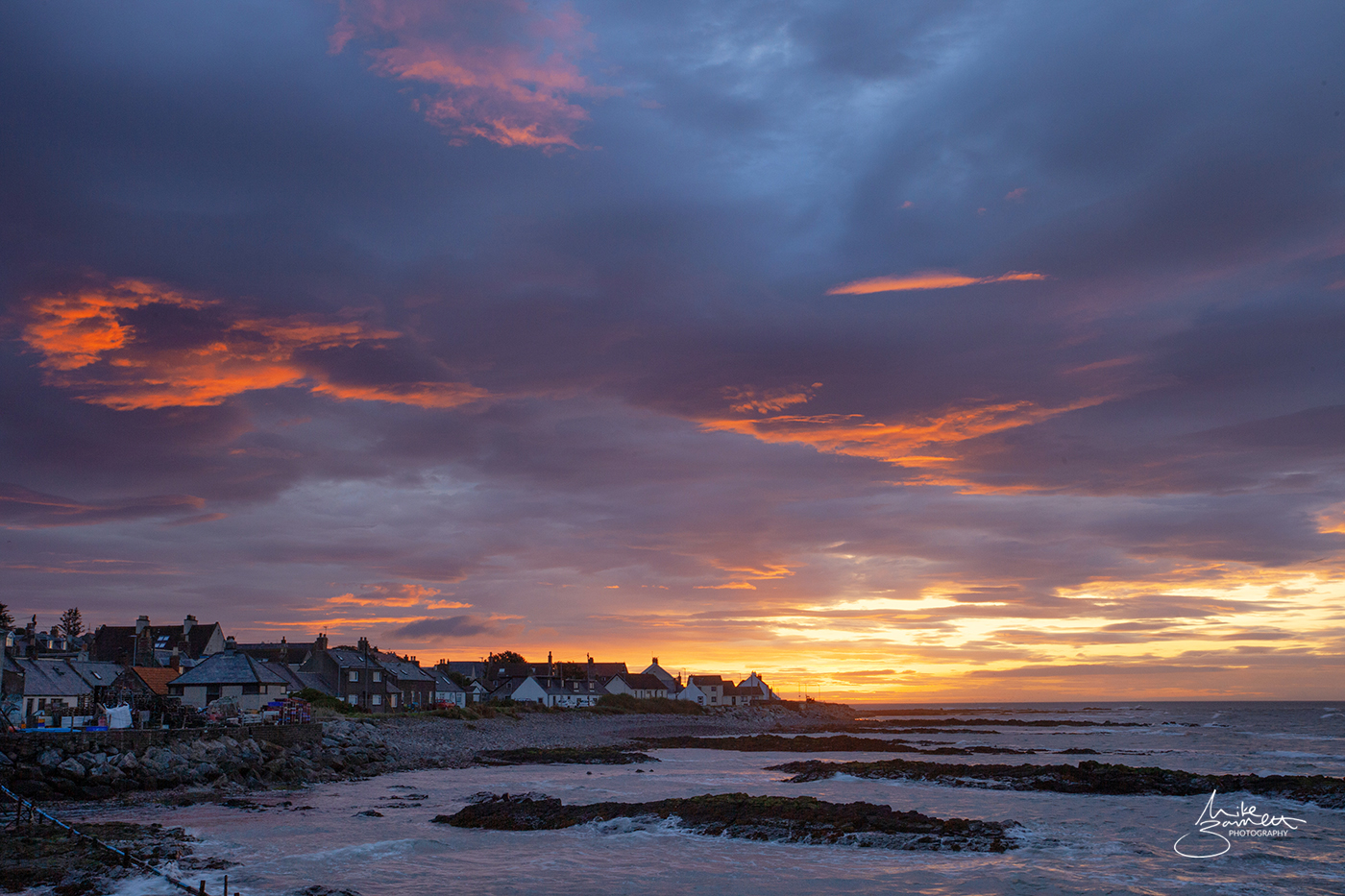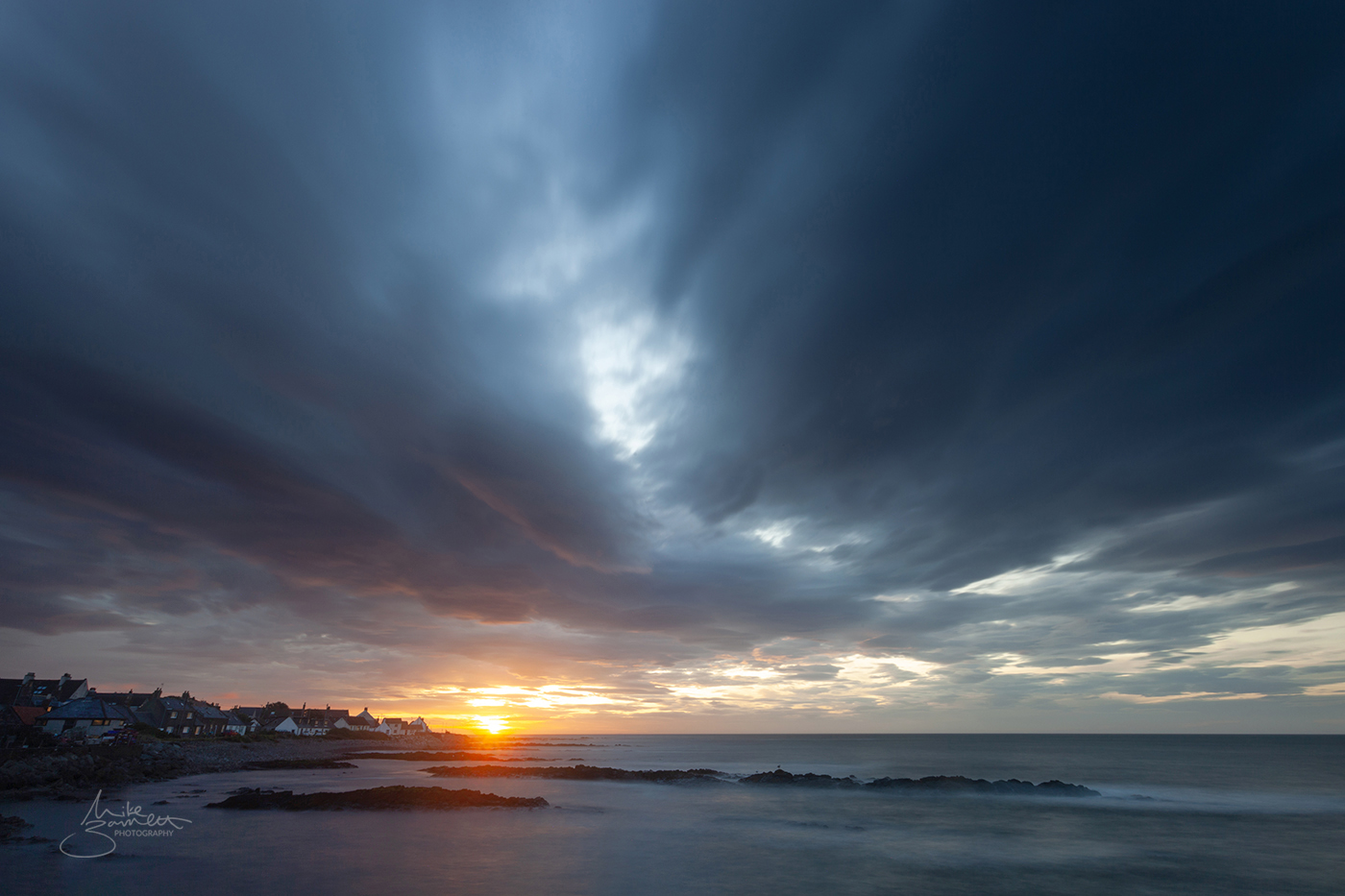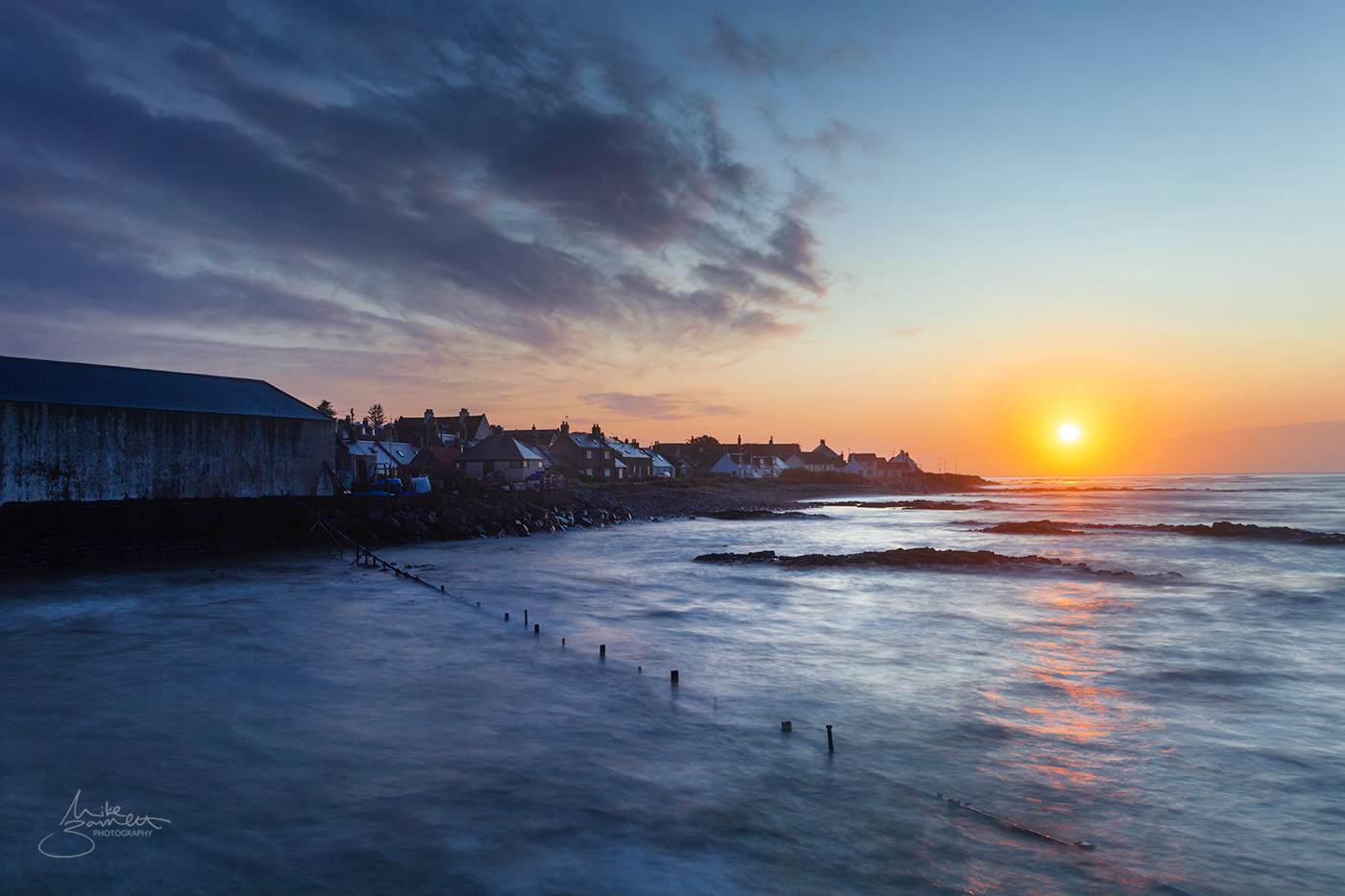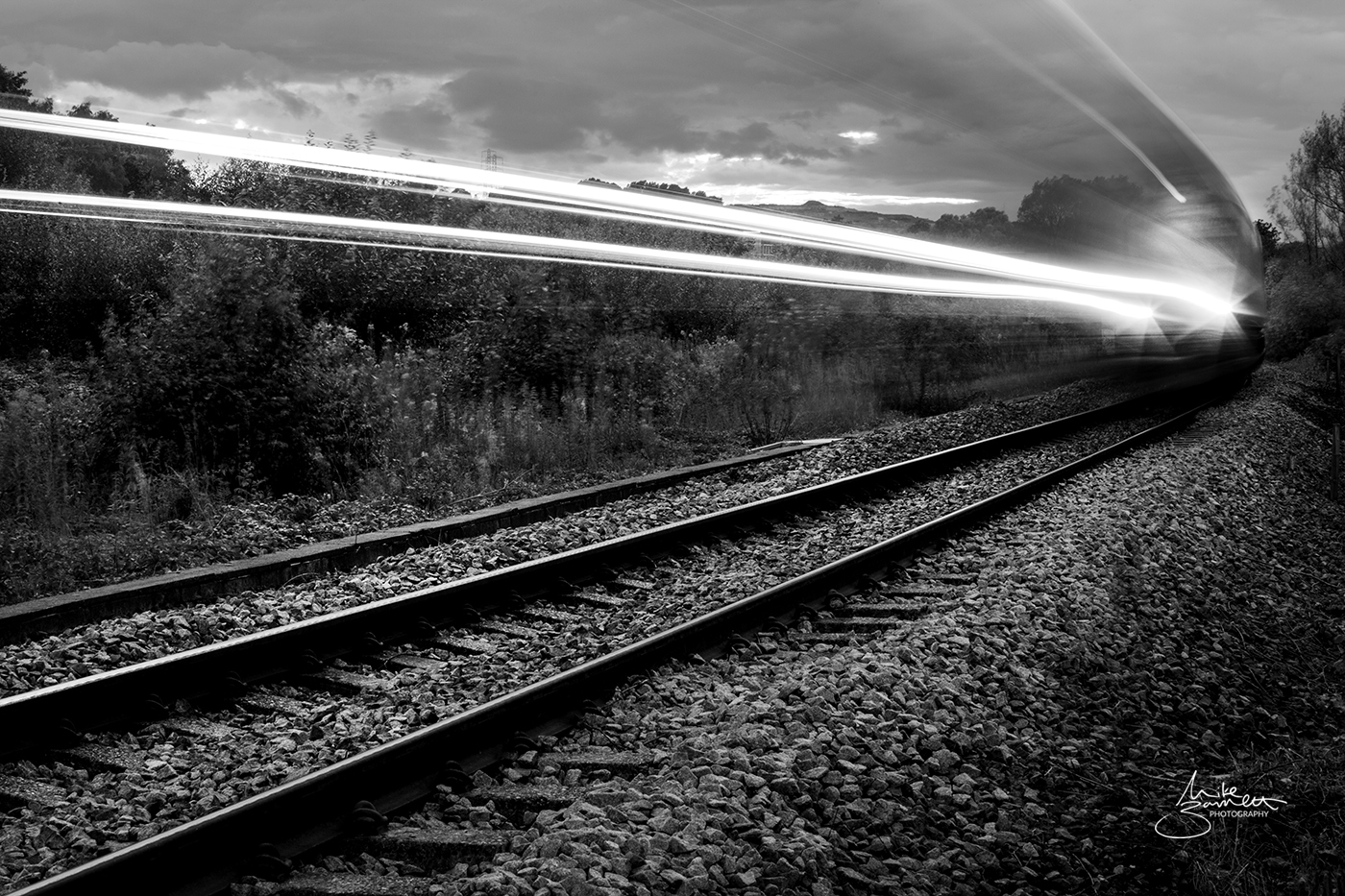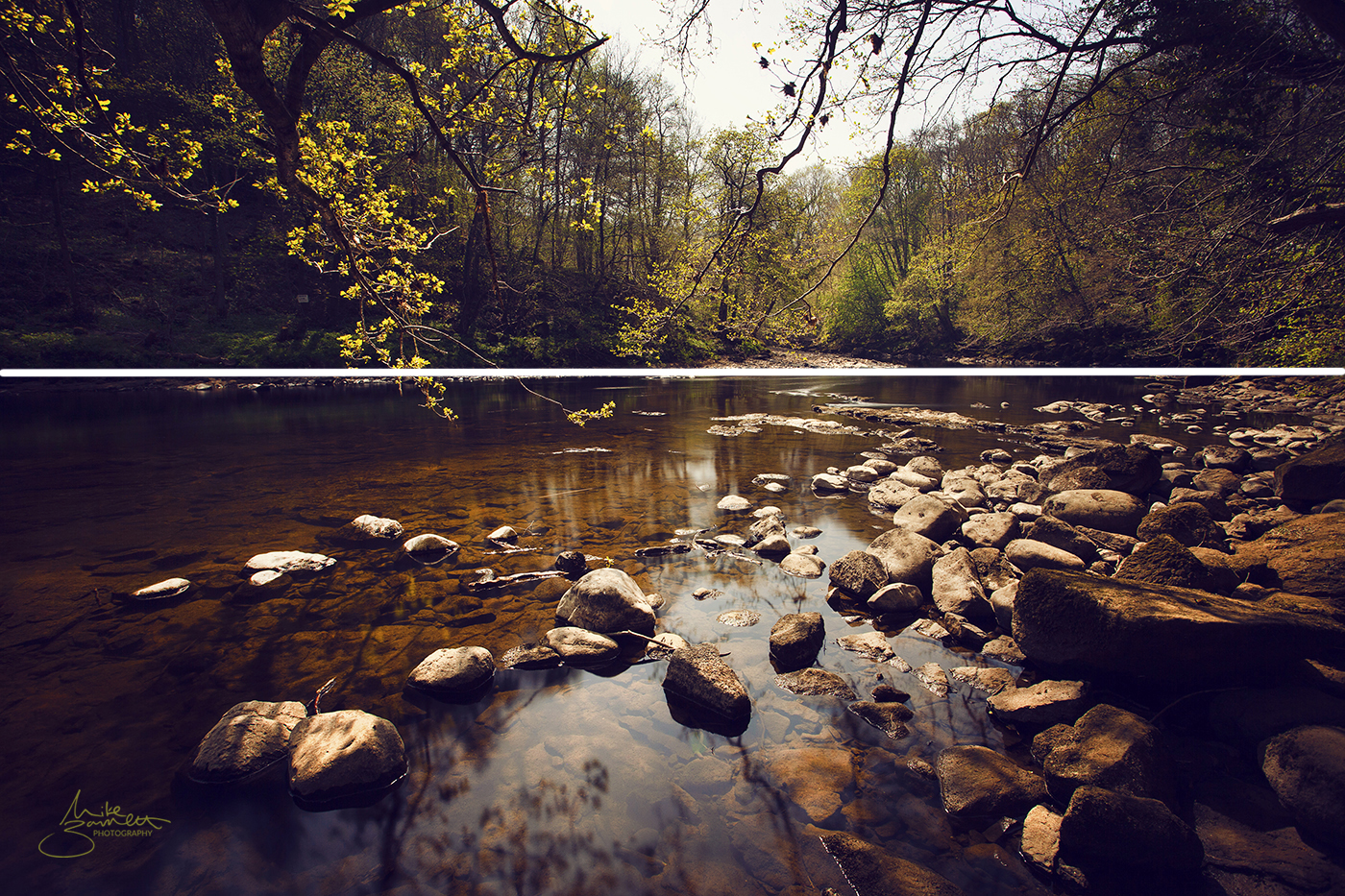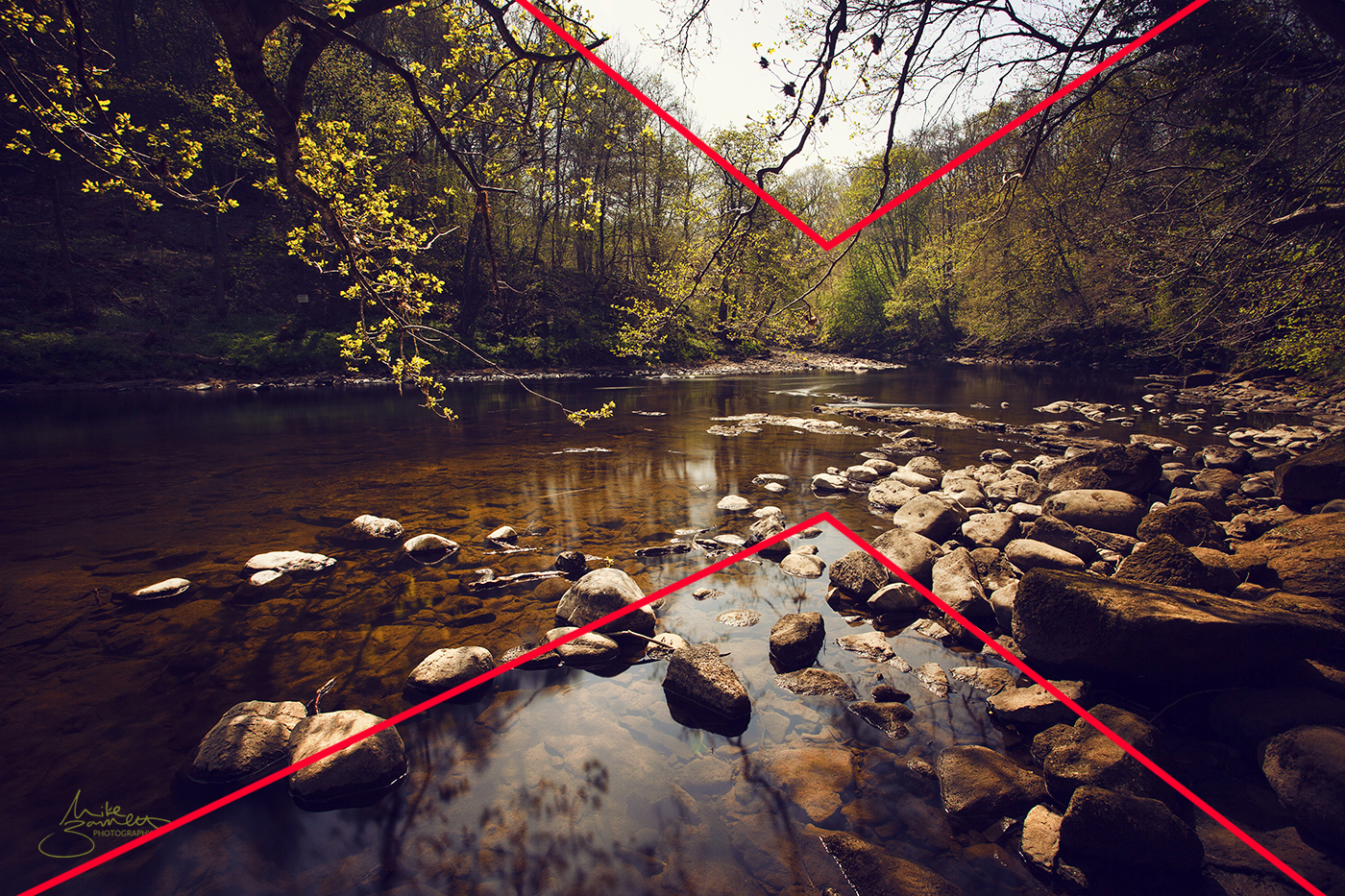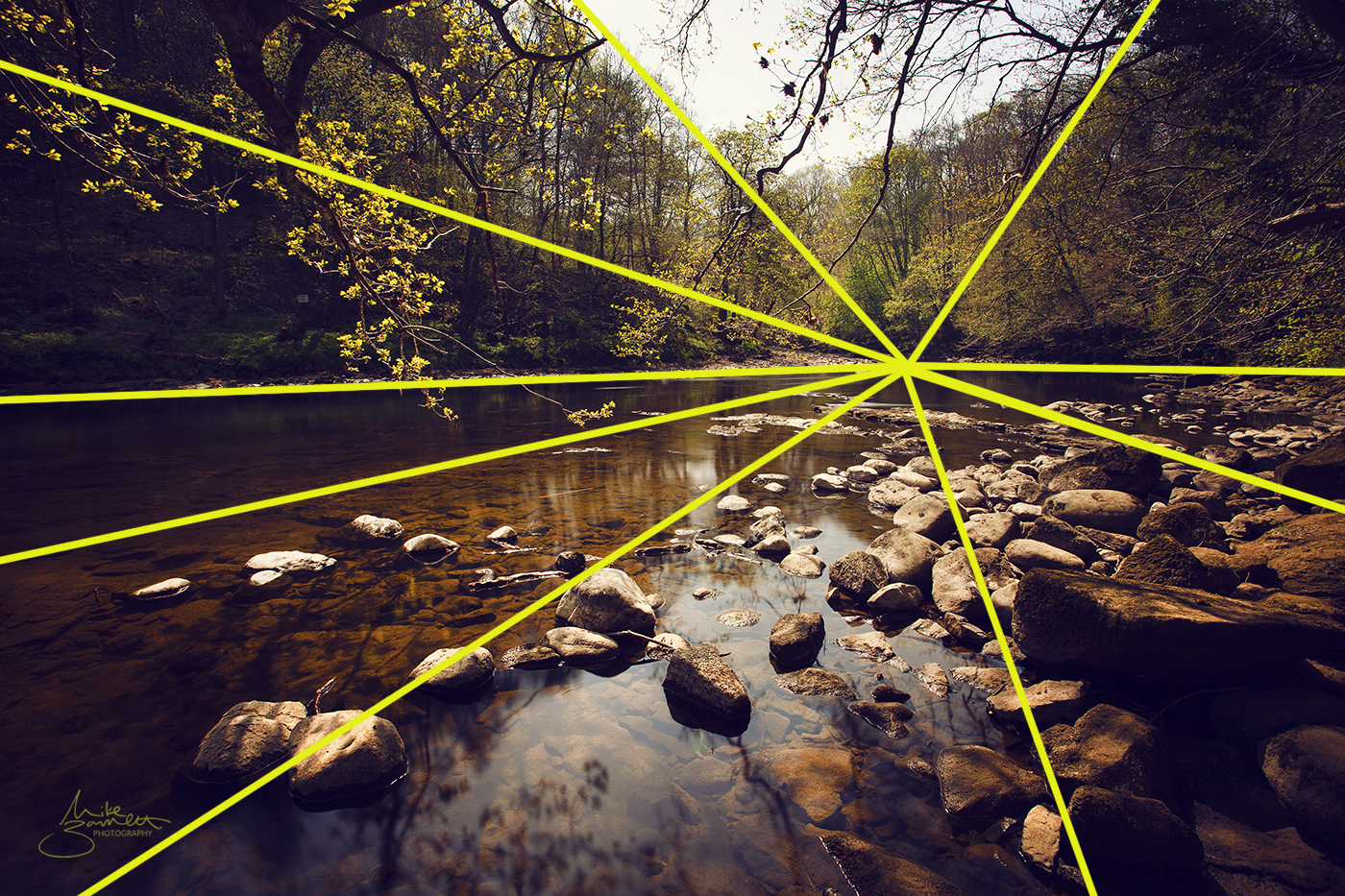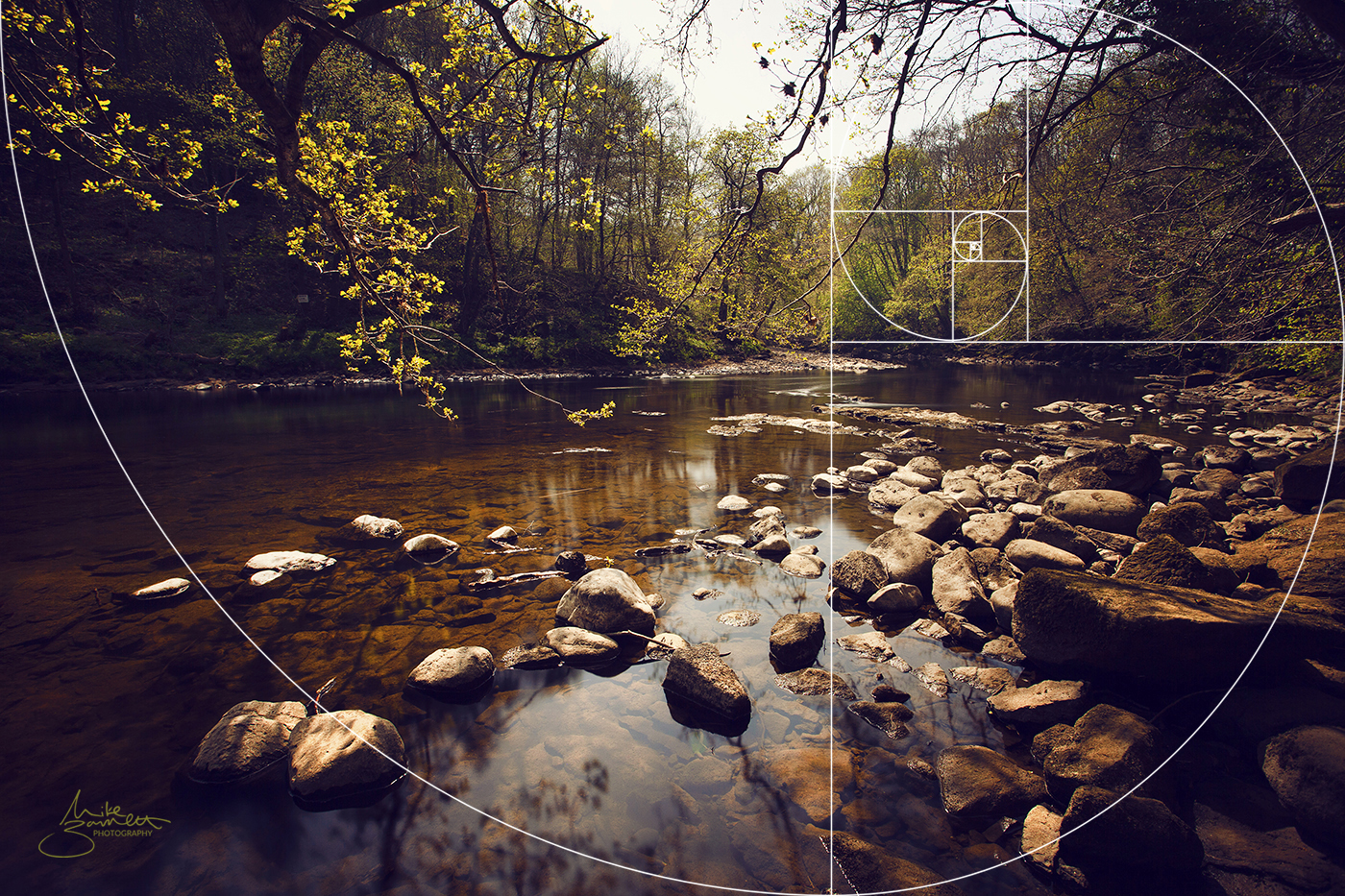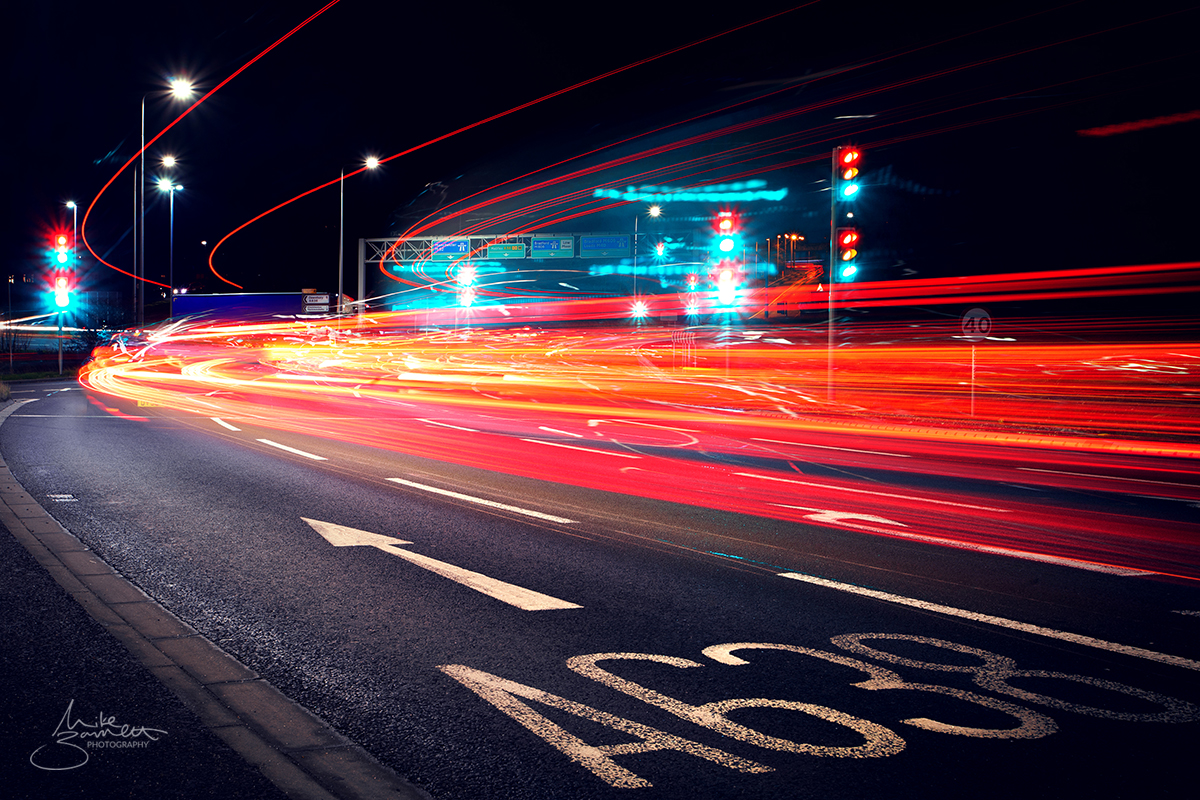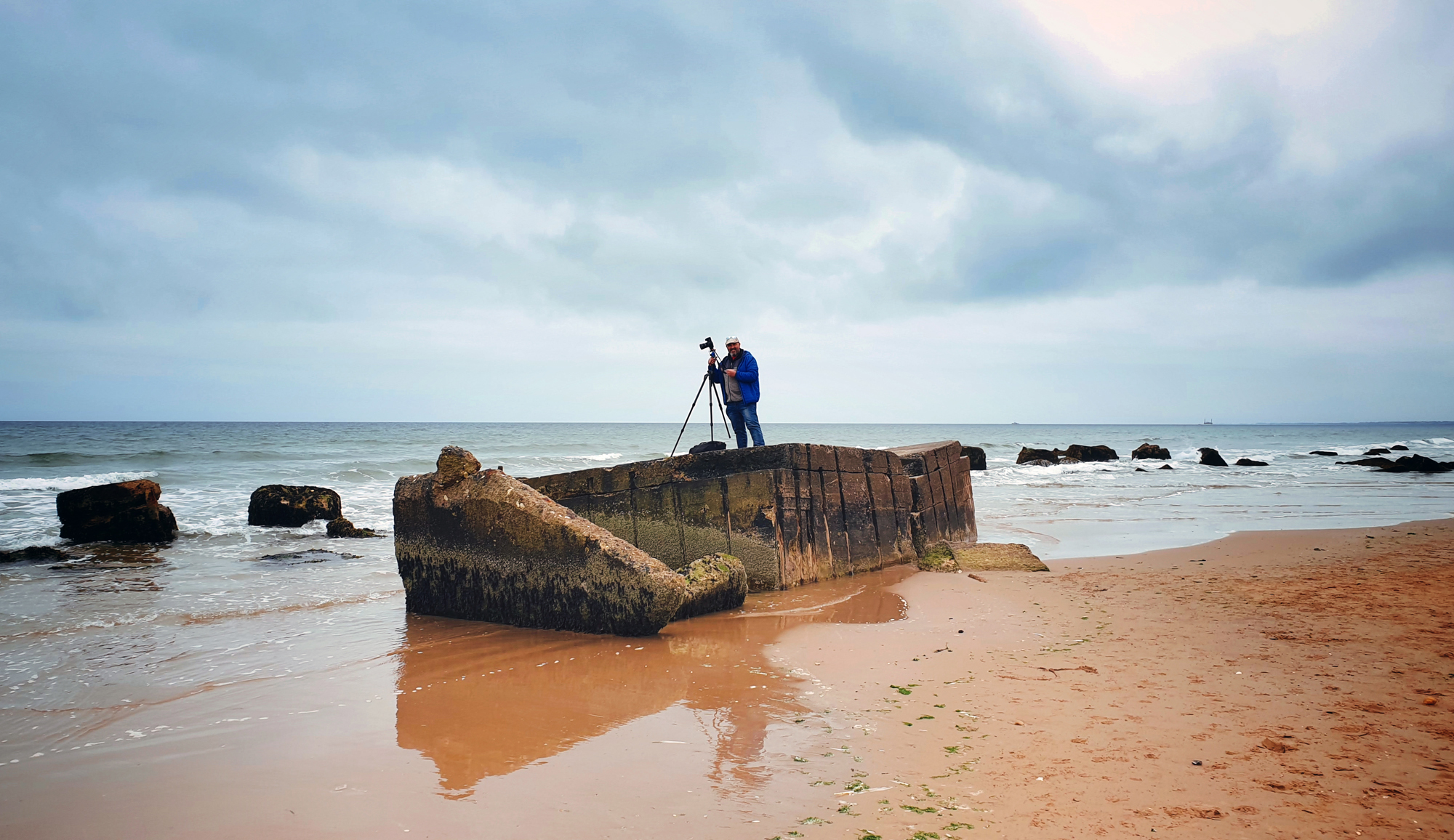
The Location
On a recent trip to the east coast of Yorkshire with a tog friend of mine, we took a walk south from Bridlington along the beach front to find the numerous pillbox guard posts and various other structures scattered along the landscape. Where we ended up was a place called Fraisthorpe Beach. It is about a 3-4 mile walk from Bridlington harbour along the beach front. These salt water battered and barnicled concrete structures are remnants of the british defence effort during the second world war. Installations such as these formed an effective defence from the threat of invasion from Germany via the sea.
There are many locations along the east coast of Britain that were fortified with these types of structures. Bridlington Bay with its flat sandy beaches was an ideal place for all manner of vehicles to land. Tanks, amphibious landing craft and many other attack vehicles would have easily been able to slip up onto the land. Anti tank cubes are scattered in their dozens, in long lines up and down the beach. Most of them sit where the wave break line occurs at high tide, which made for some interesting photograph opportunities.
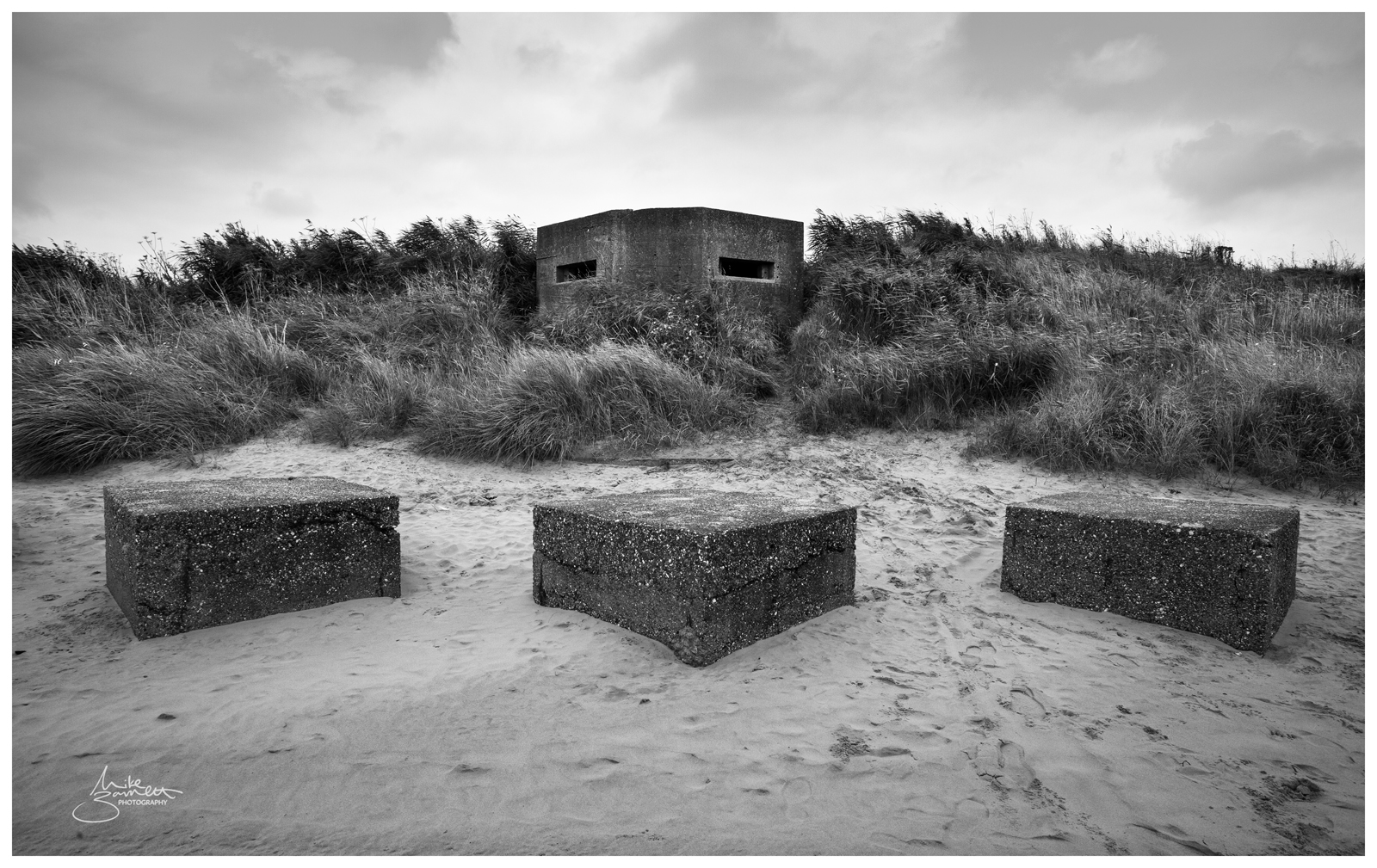
The Photography
A note was made of the location but it seemed prudent to return a couple of days later when the high tide was at its highest. The intention being, to make sure that there was a good volume of water lashing at these old structures in order to get the proposed shots. My goal was to get some super long exposures using a 10 stop ND filter. This would enable me to flatten out the seascape and achieve some clean, stylised shots. There was a good light for this type of photography. I made a multitude of compositions during the three hours that we were there. Some shots didn’t work out so well. Some, however, worked out wonderfully.
The images below are some of my favourites from the time spent at this location. I have deliberately presented a colour and a black and white version of each of the images. They work equally as well, but somehow are strikingly different in their appearance. Particularly when viewed next to each other.
The lens I used was an EF 17-40mm F/4L USM with a 10 stop ND filter, using various focal lengths. All at F/20, ISO 50, with a mixture of exposures ranging between 213 seconds and 361 seconds, tripod mounted, in bulb mode.
My objective was to flatten out the water as much as possible and get a good contrast between the wave break line and the horizon line. Composition wise, I really wanted to show some of the beauty of these wonderful structures. Covered in barnacles and seaweed, you can see how they have eroded over time, with bits of steel poking out the top of some of the blocks. Many have broken down almost completely. There are, however, many that have kept their shape and integrity and would no doubt still repel a landing army of old. Or new, for that matter.
© Mike Barrett Photography 2021 – All Rights Reserved
Click on the images to enlarge.

